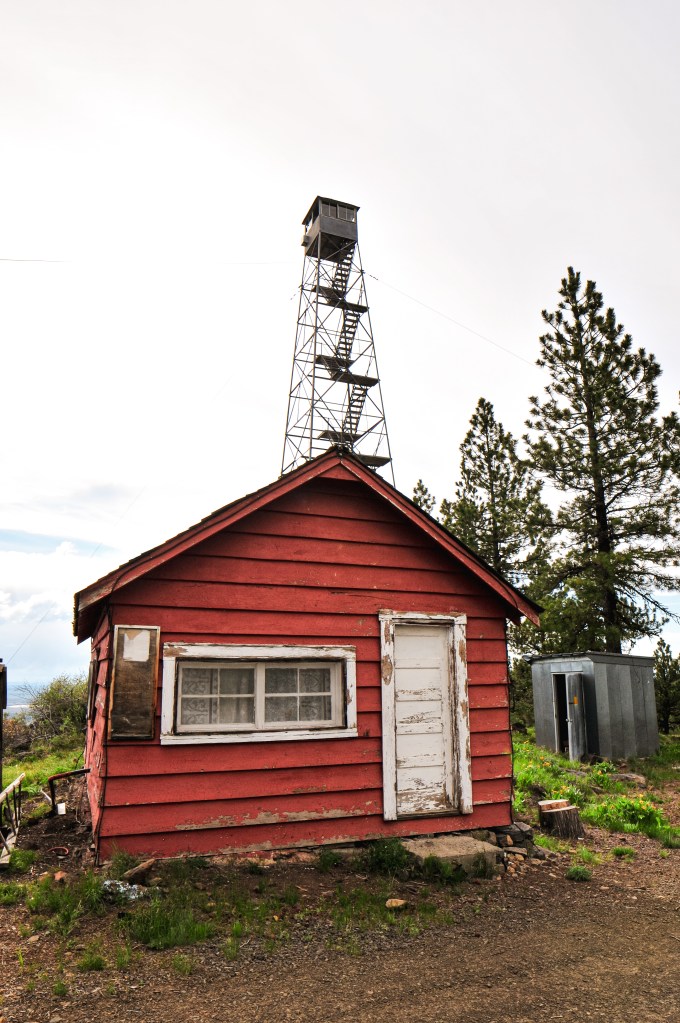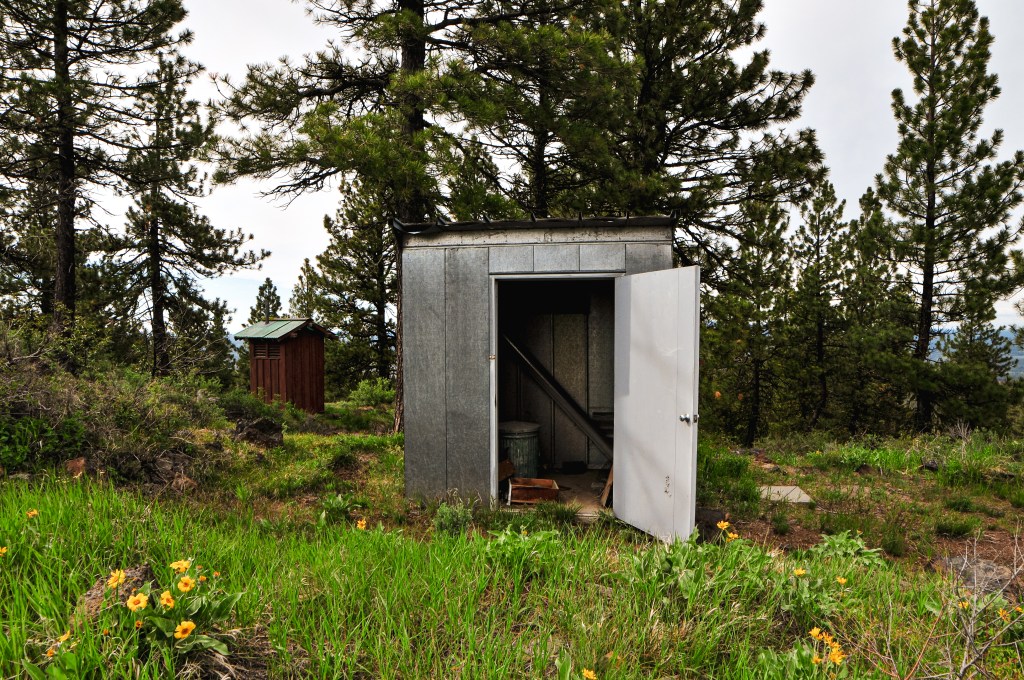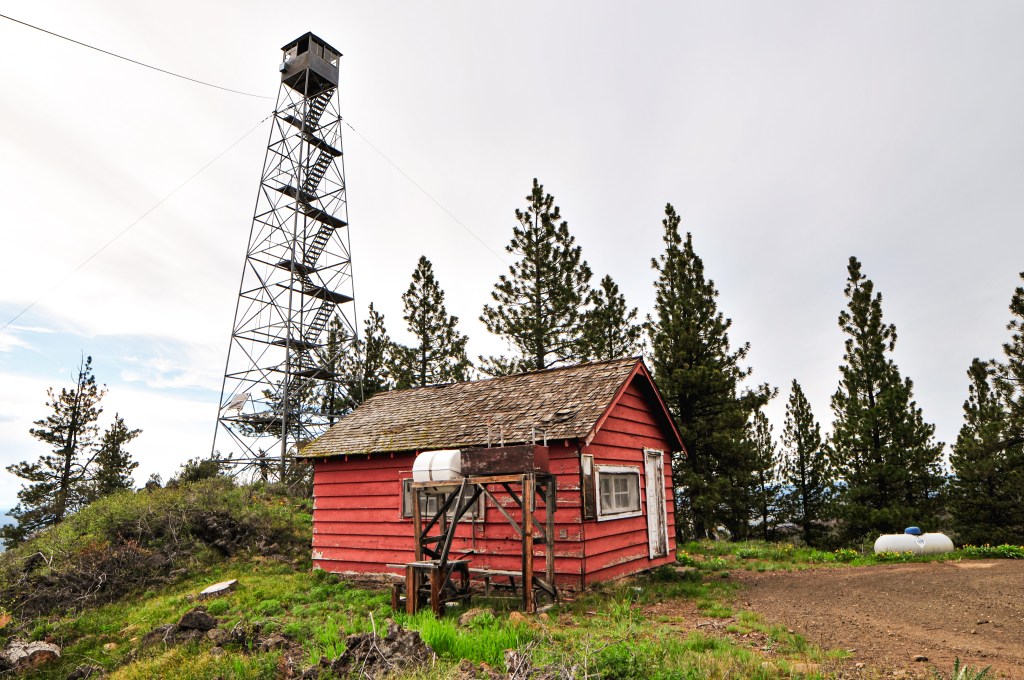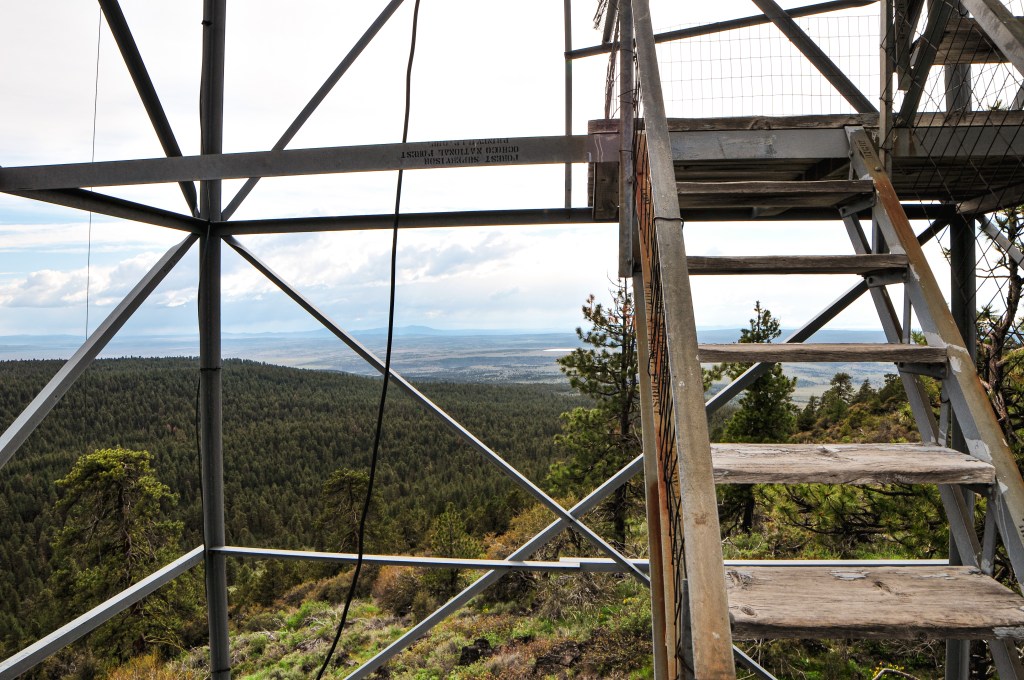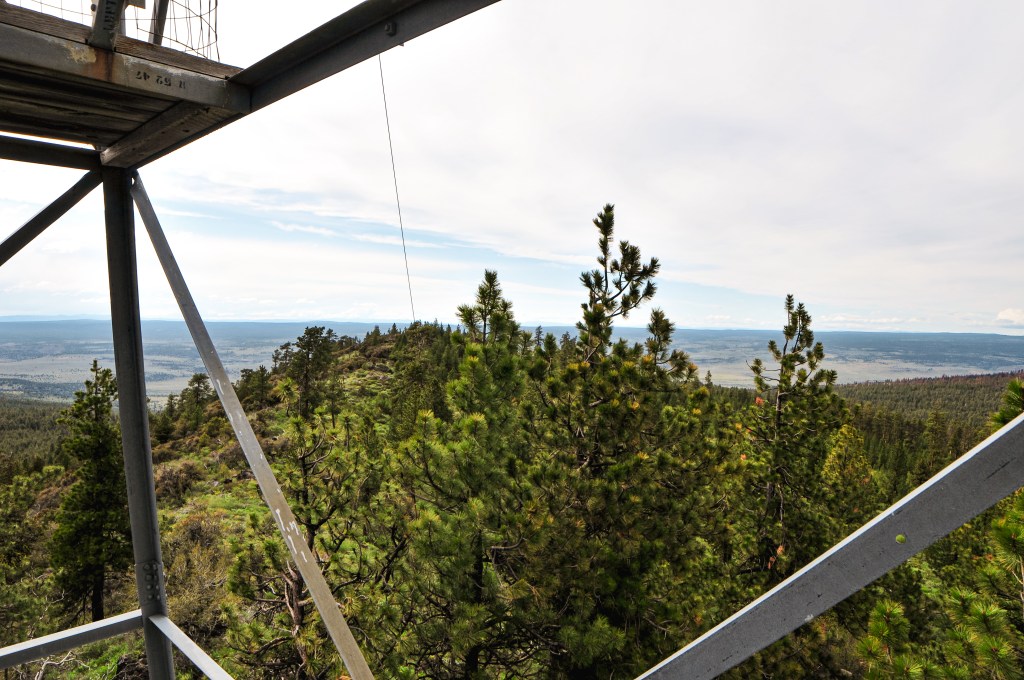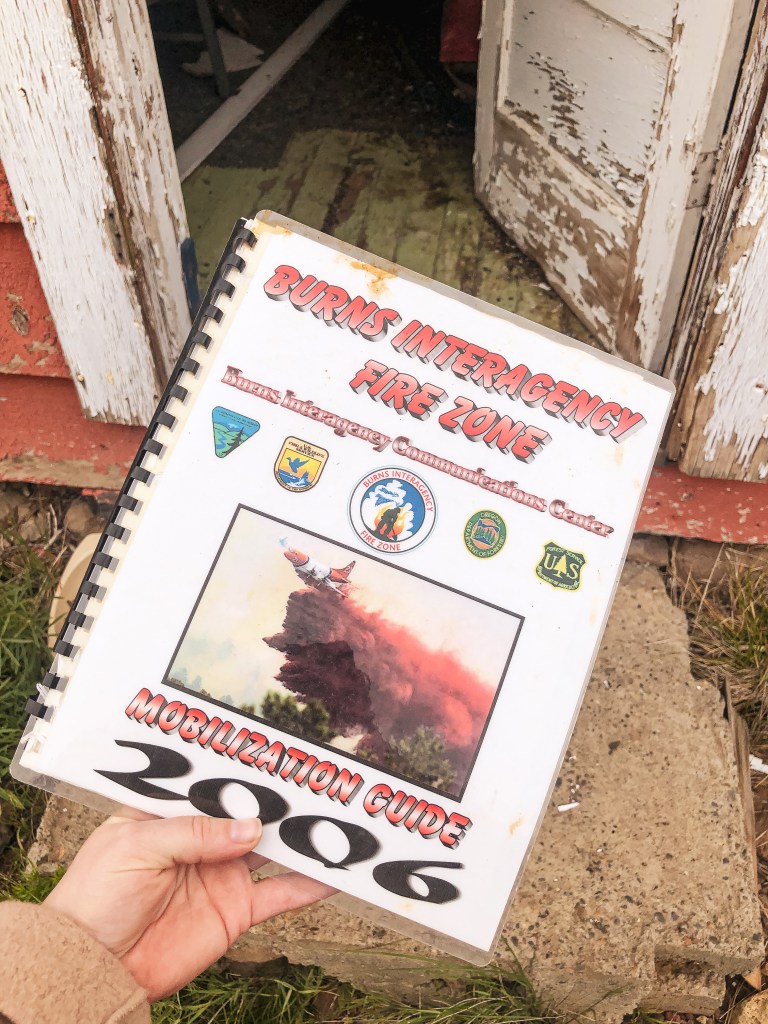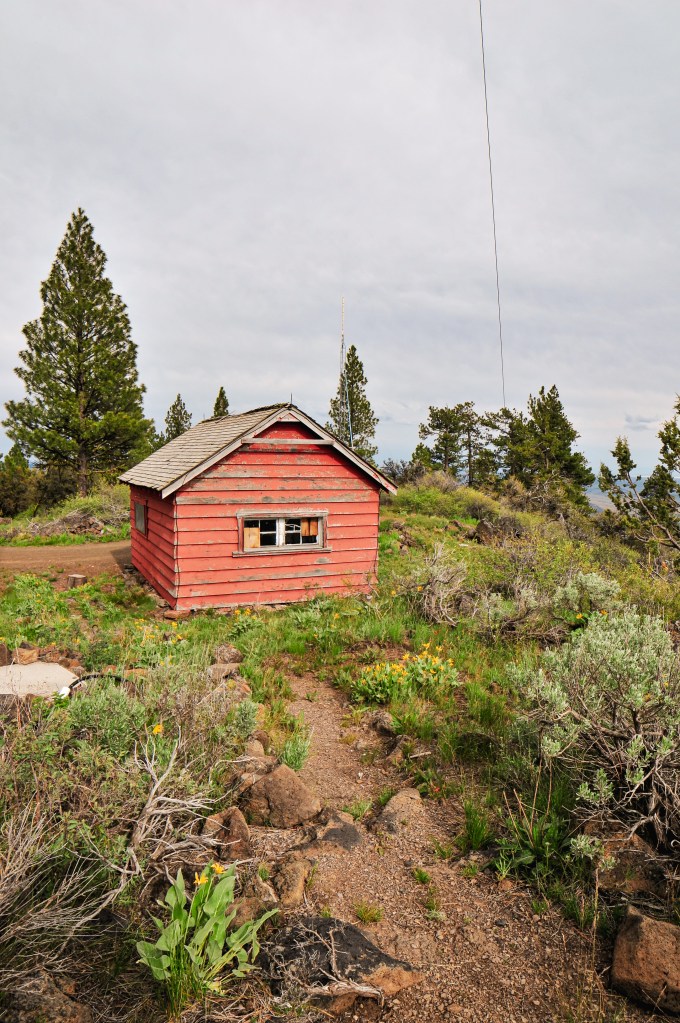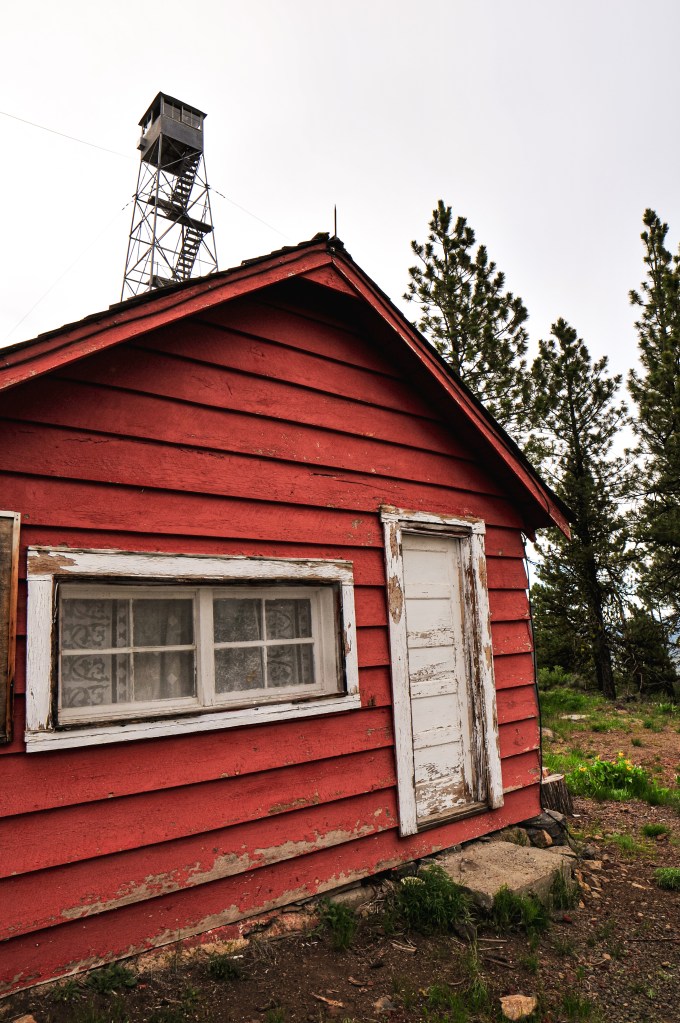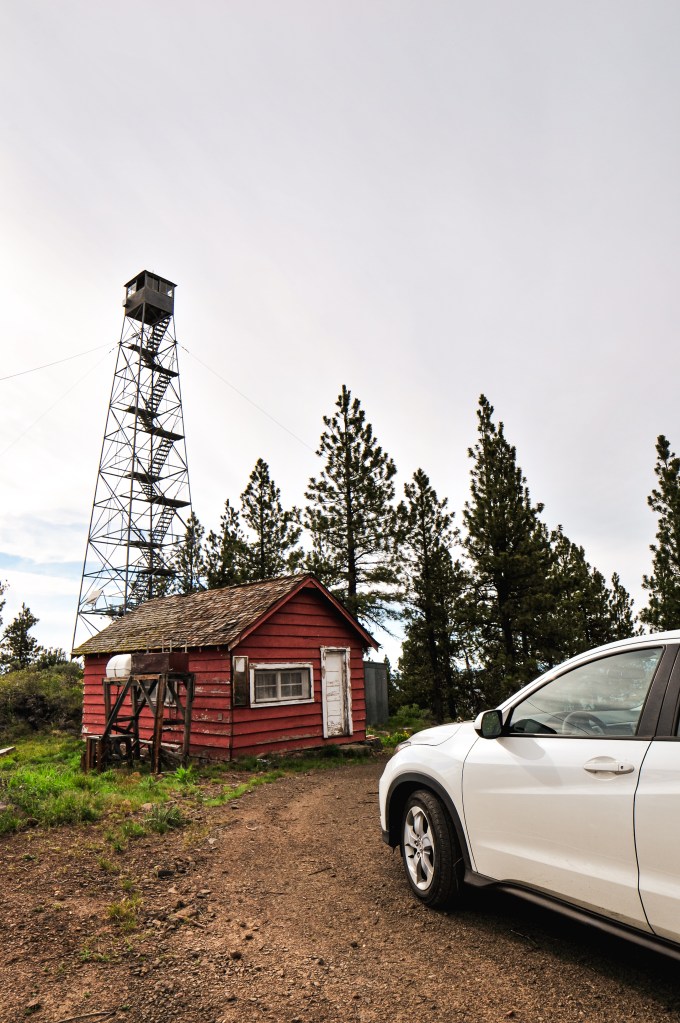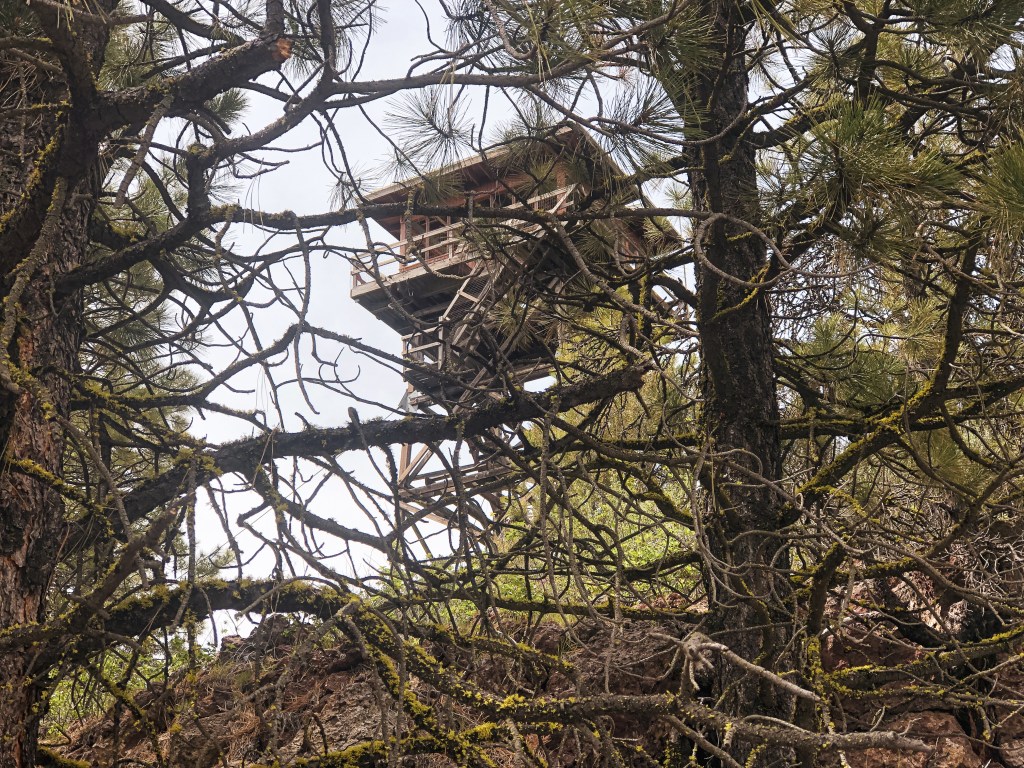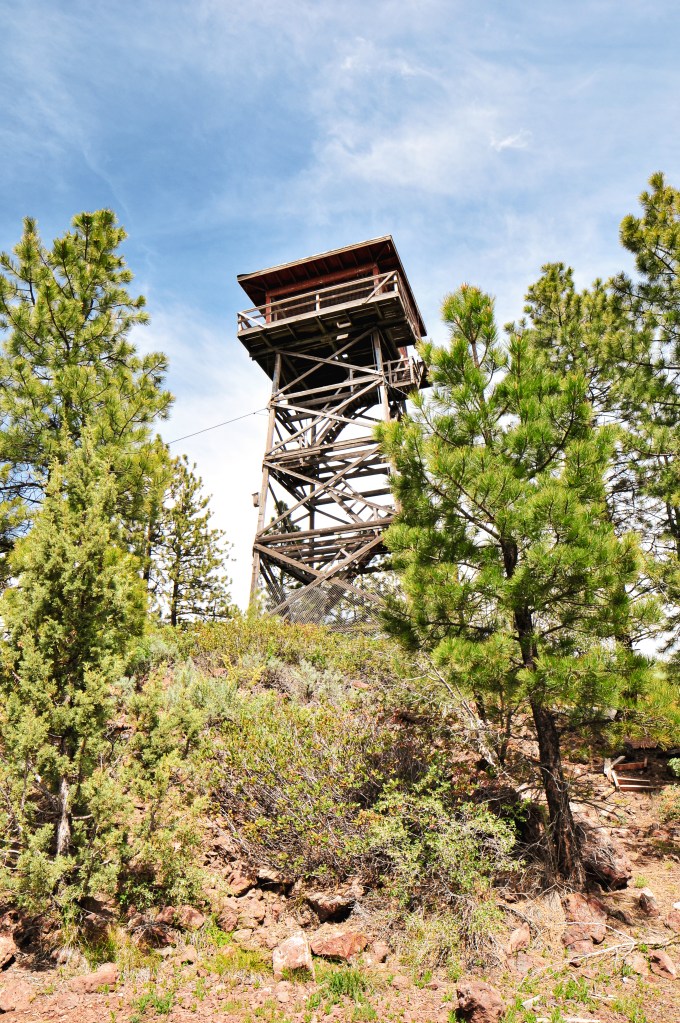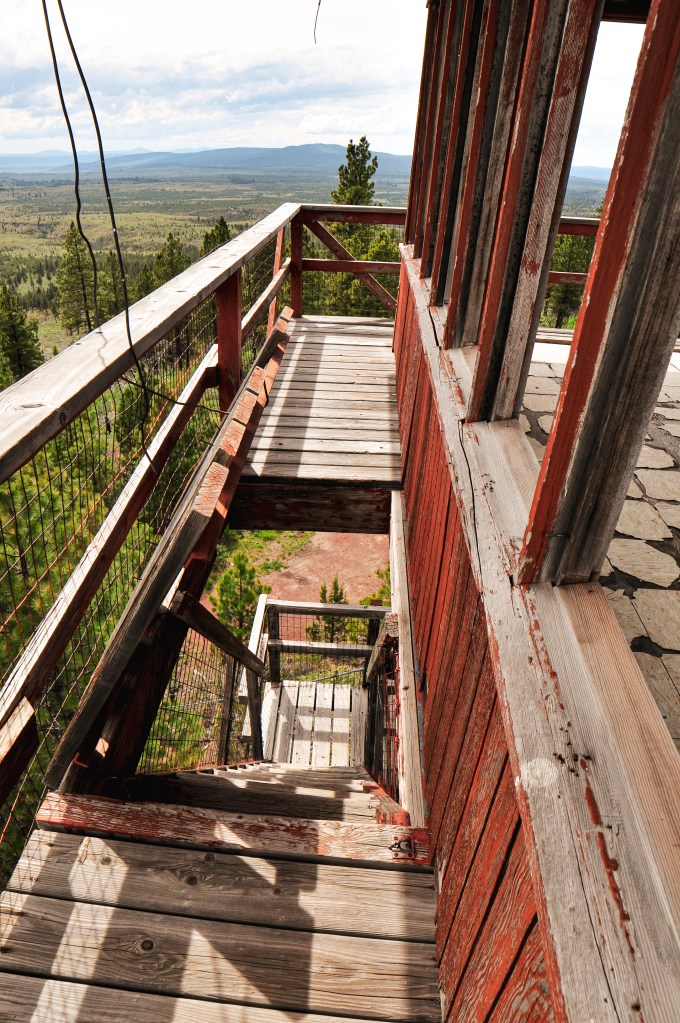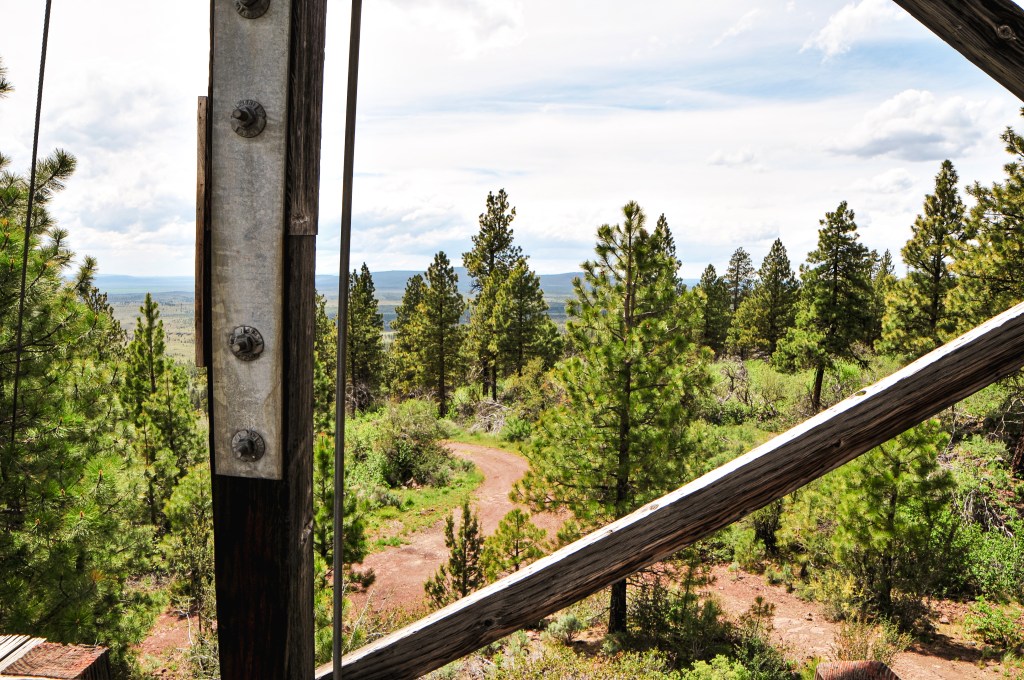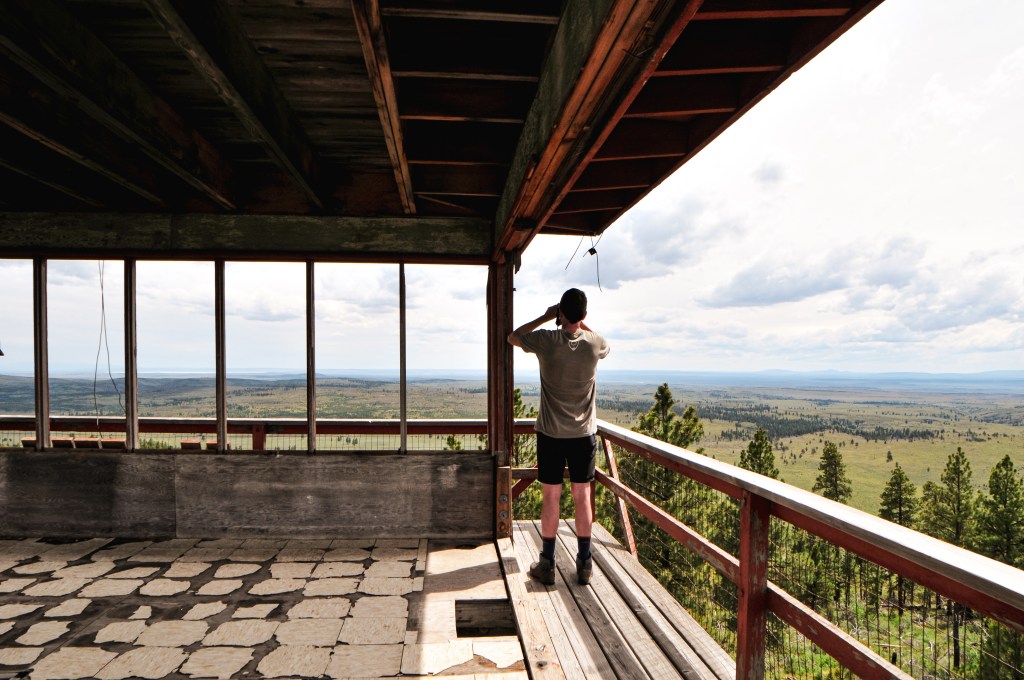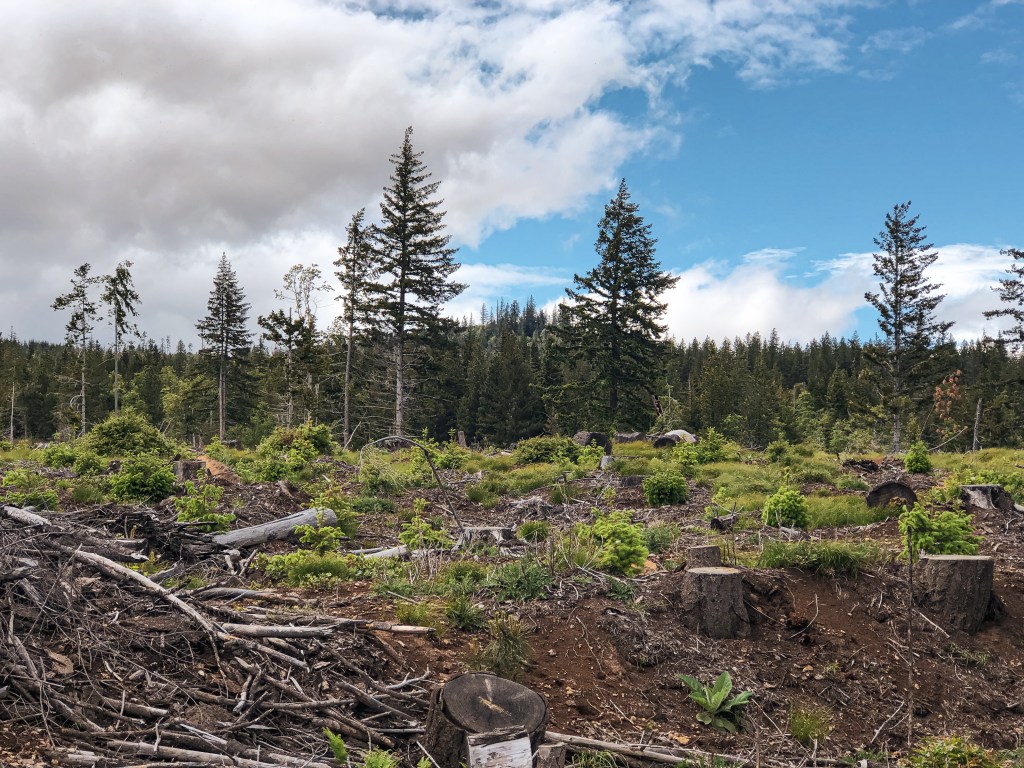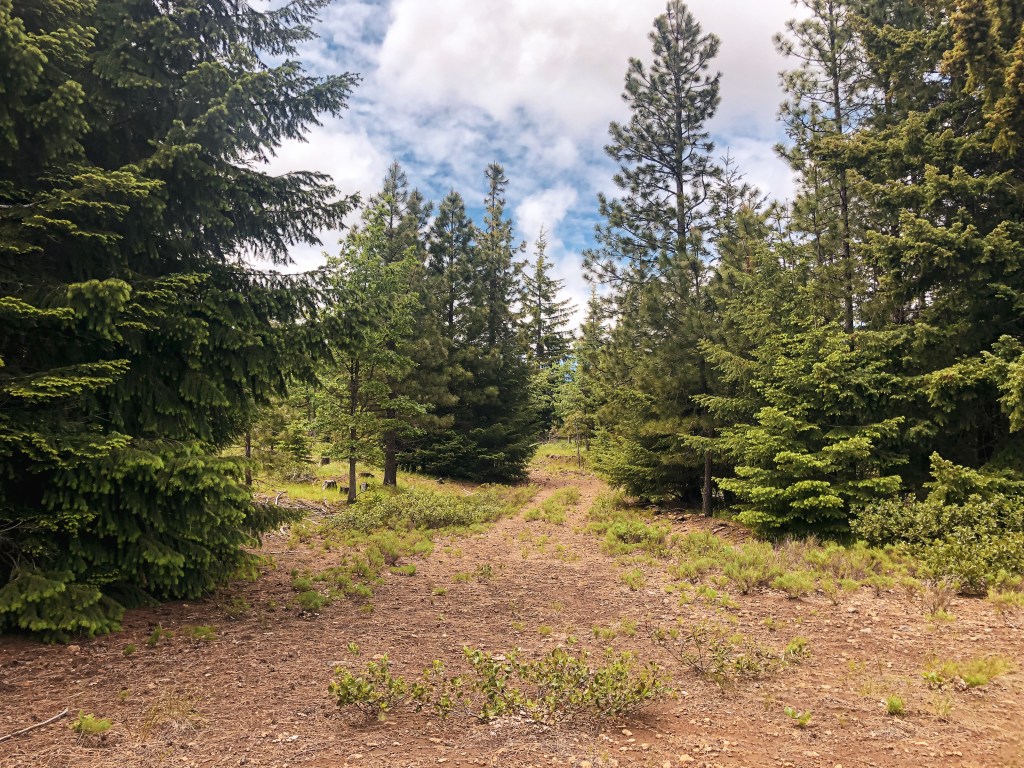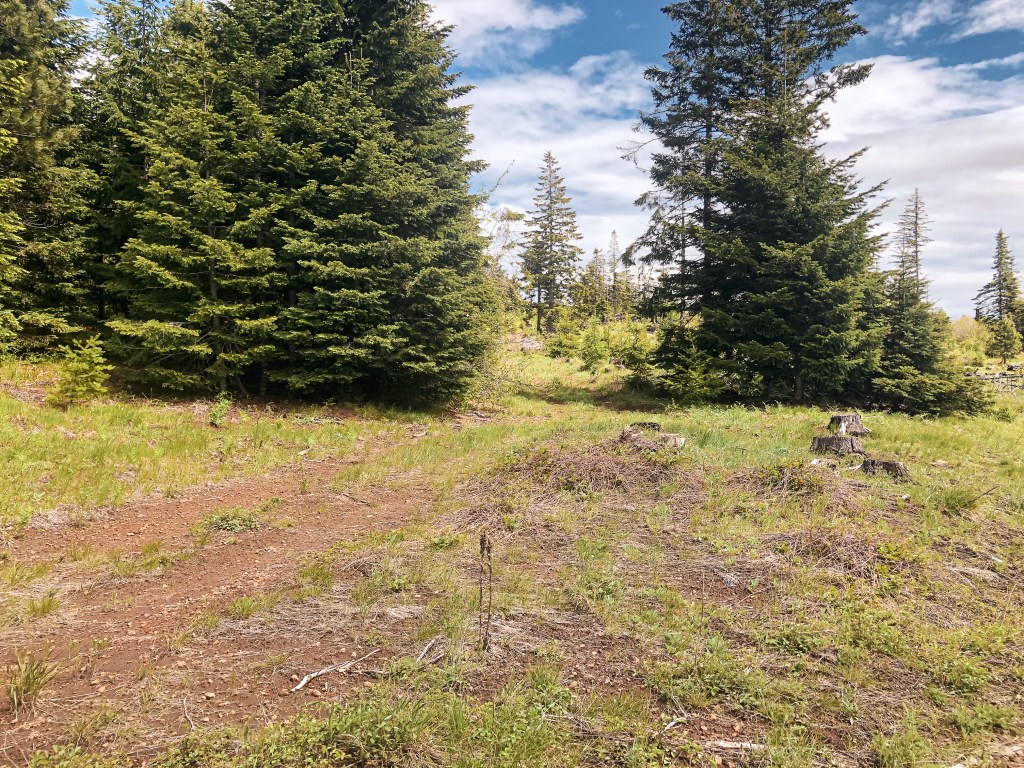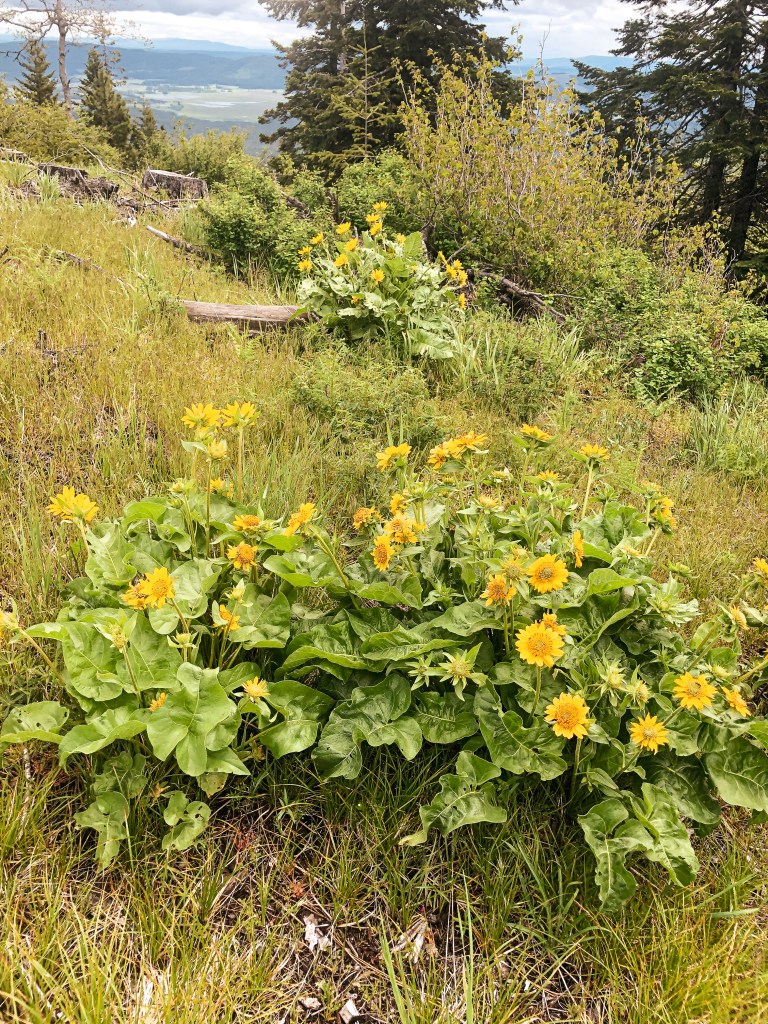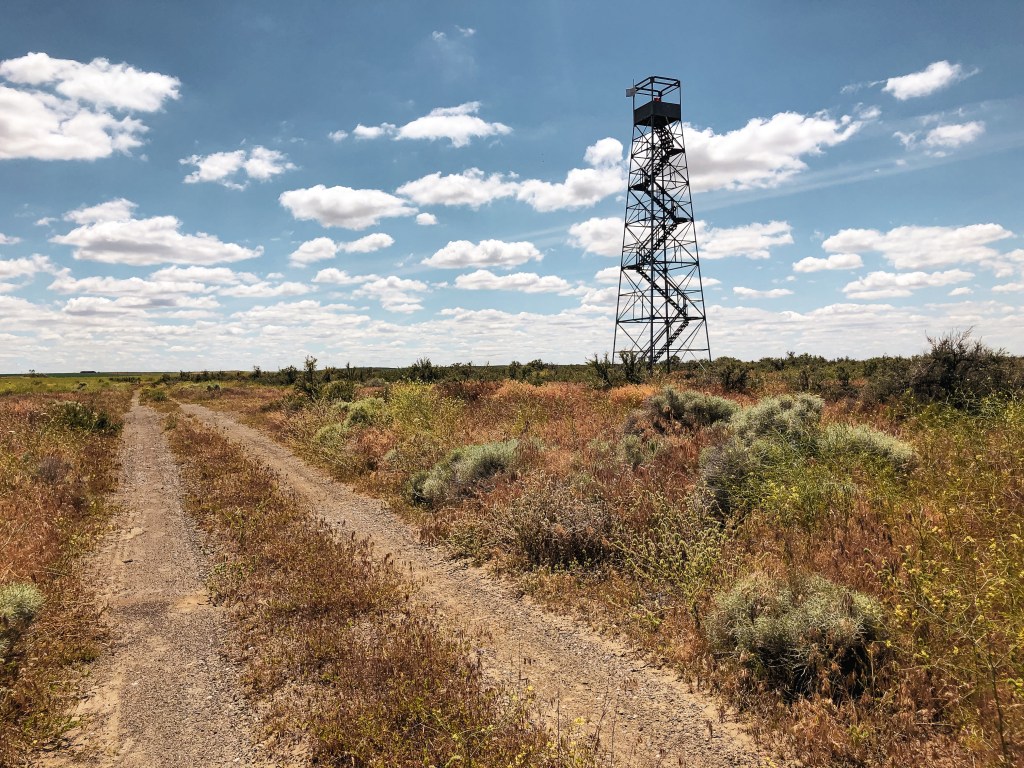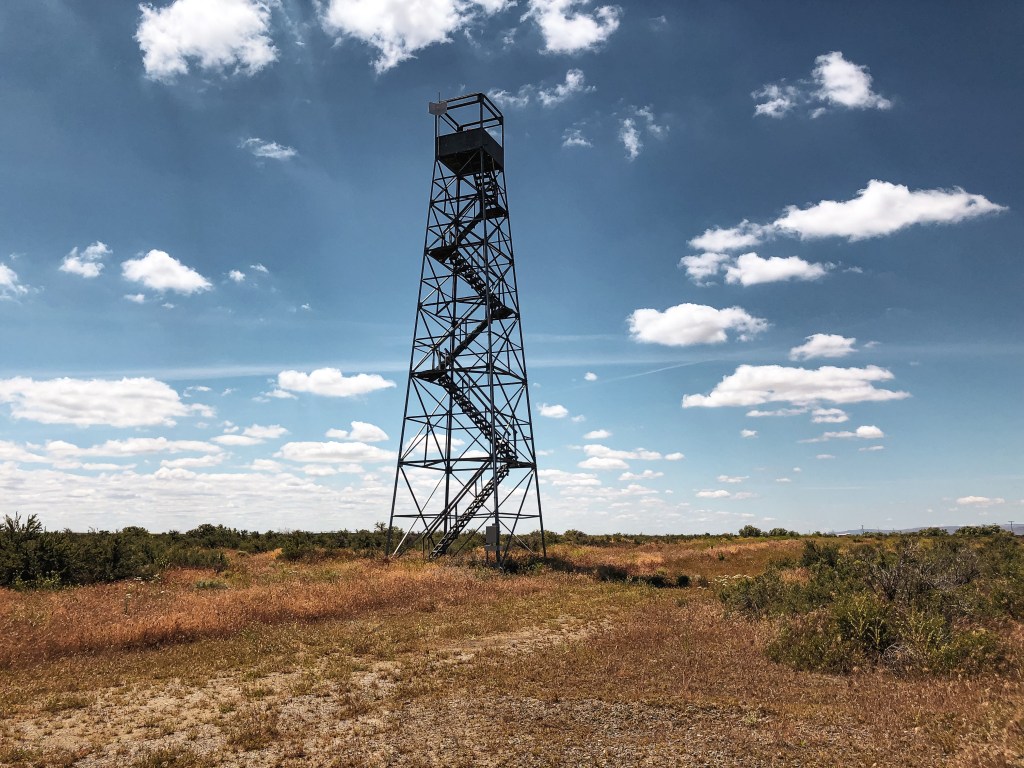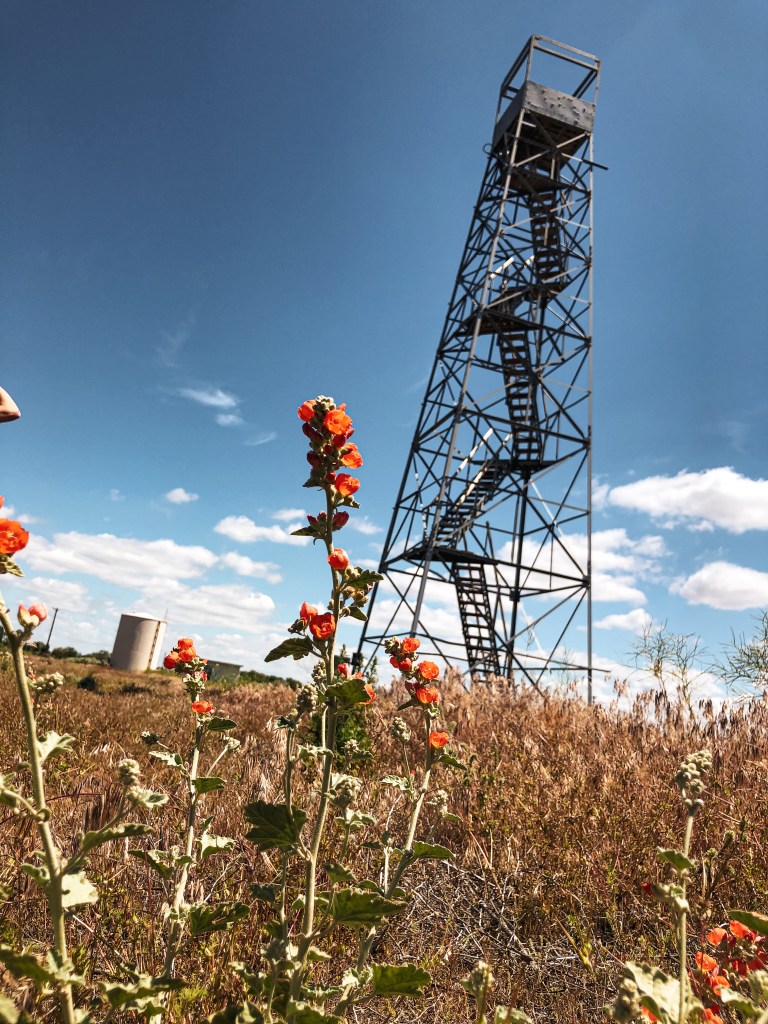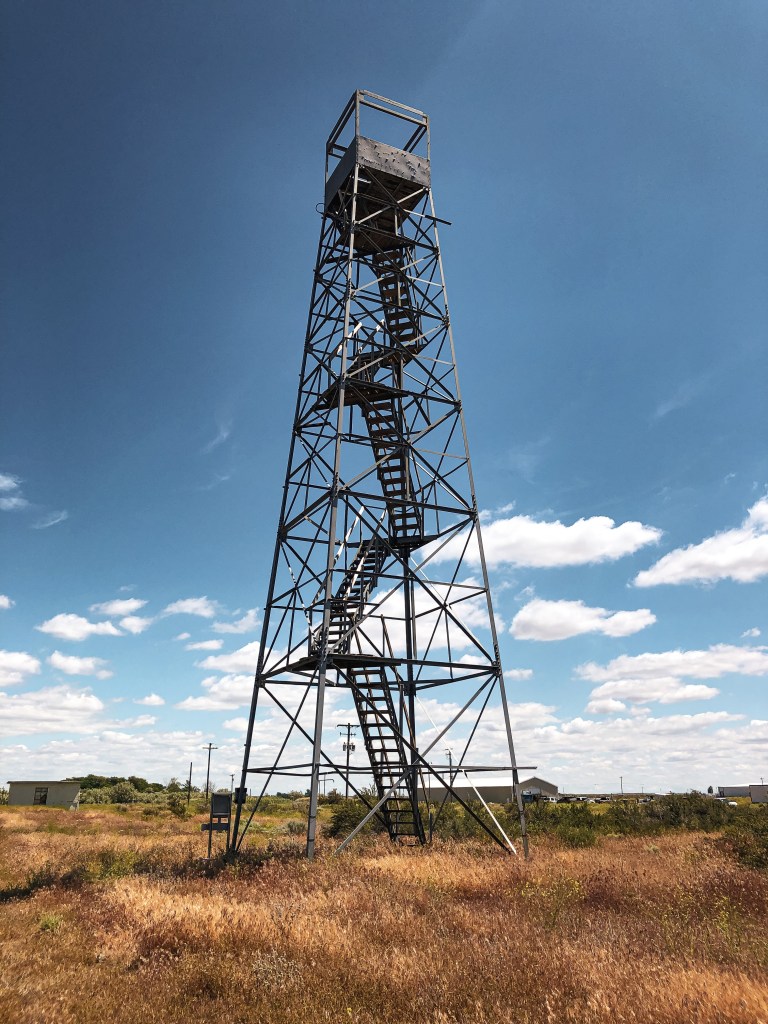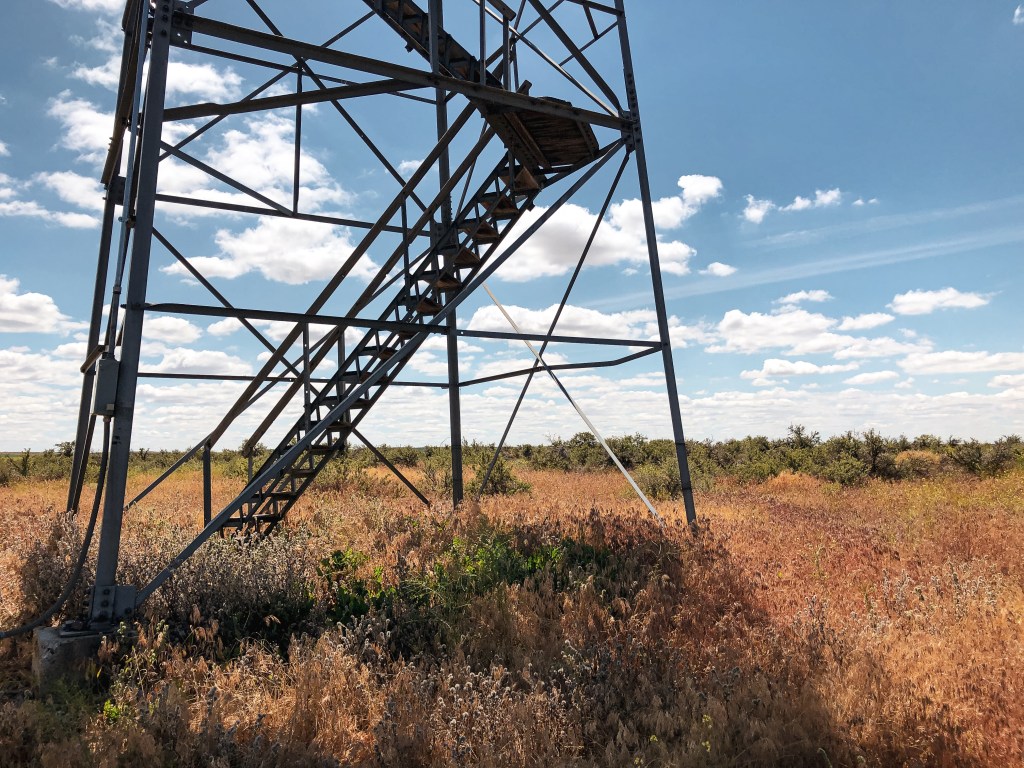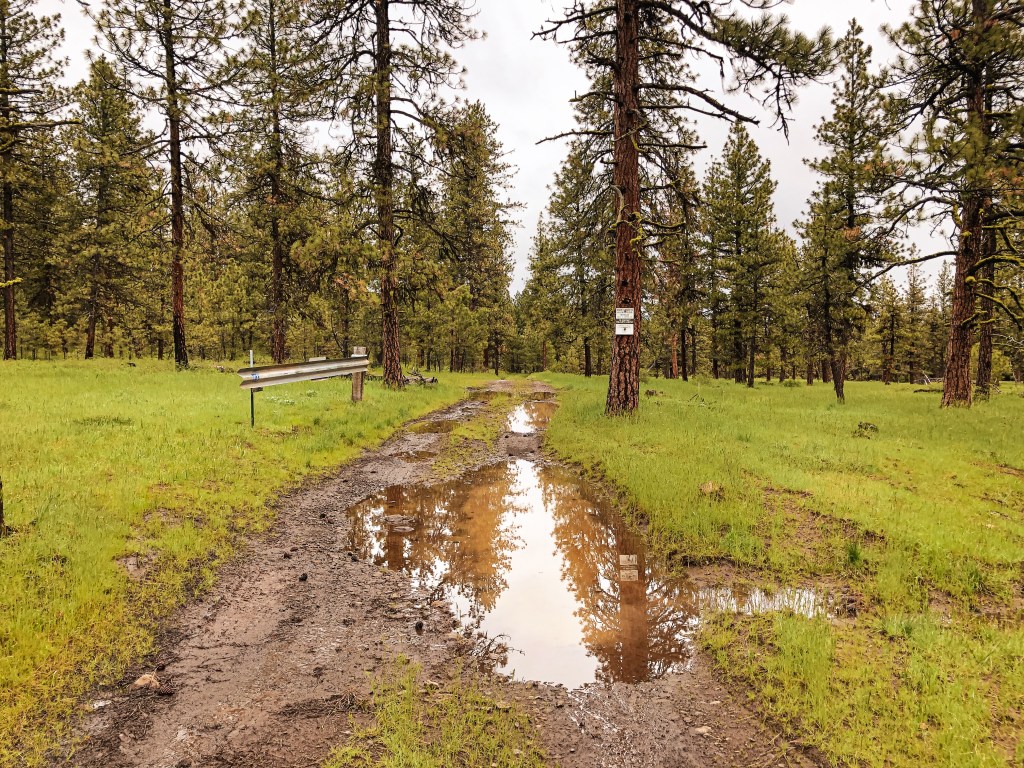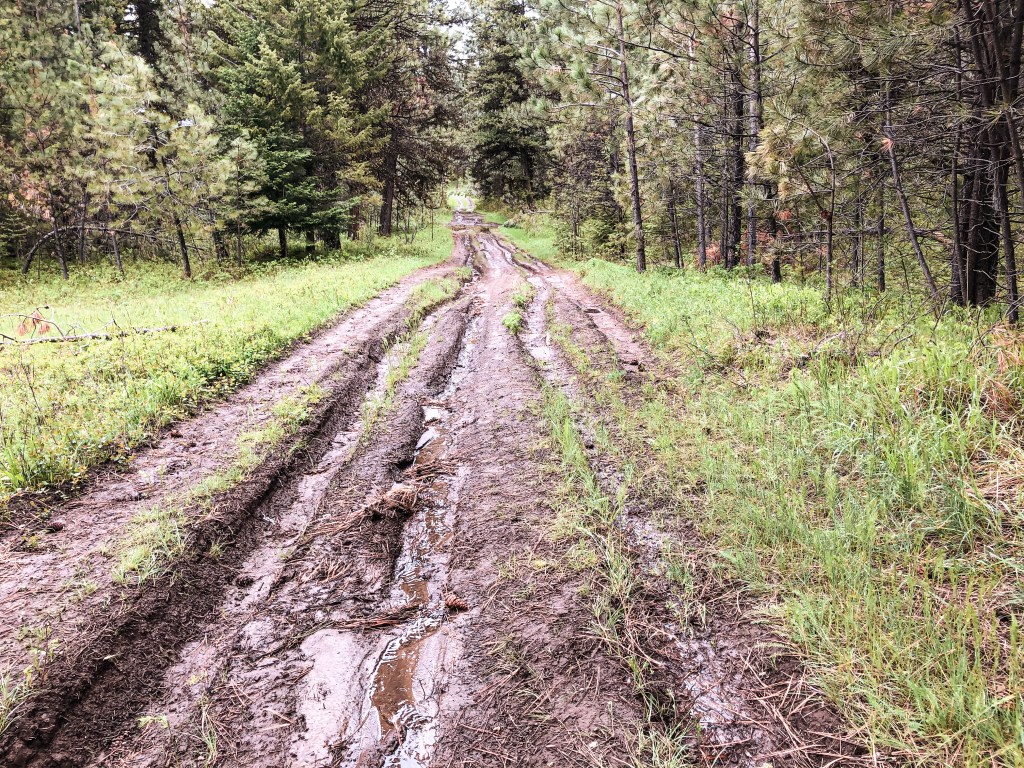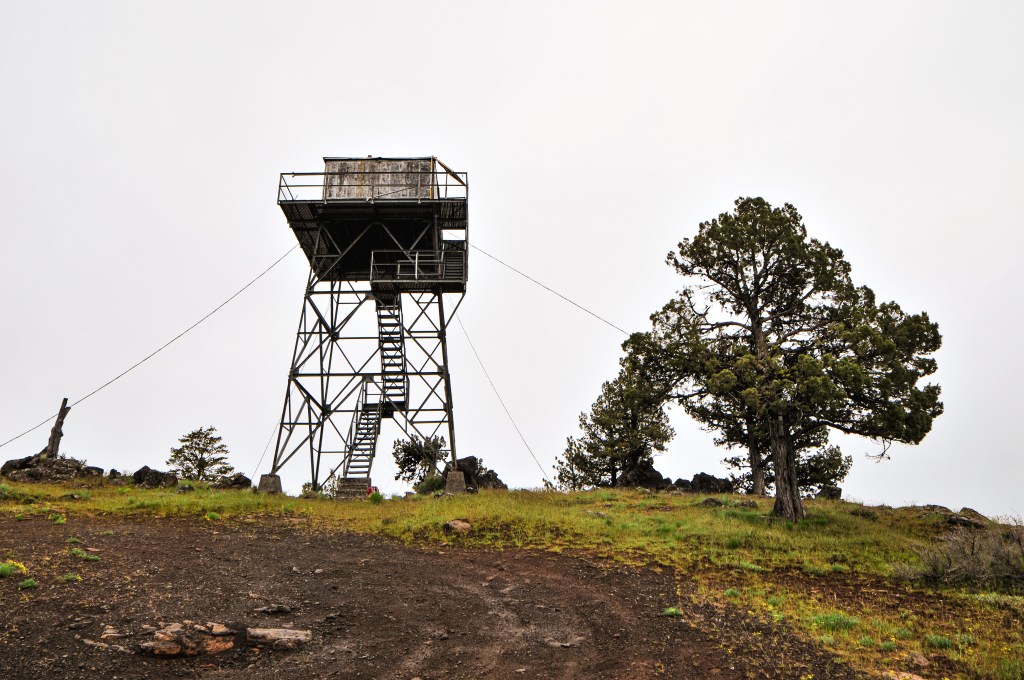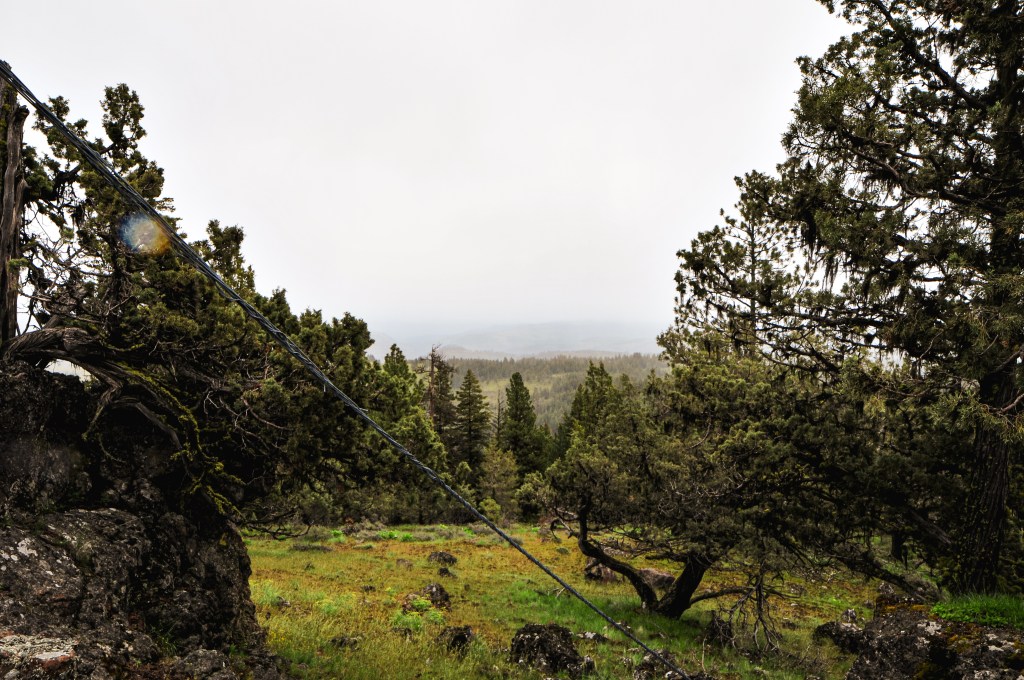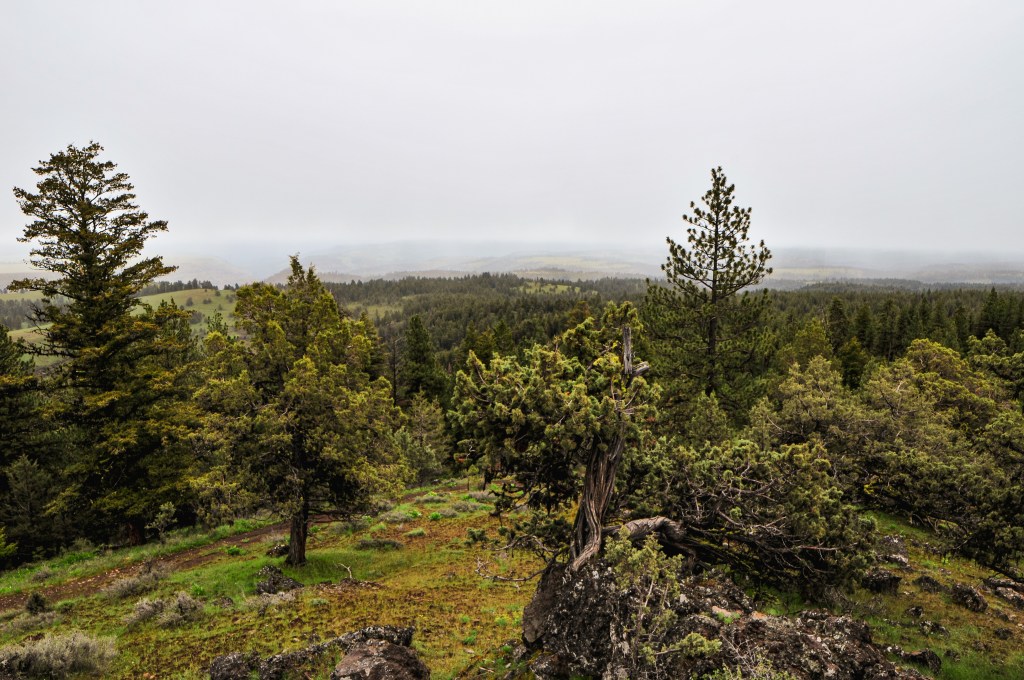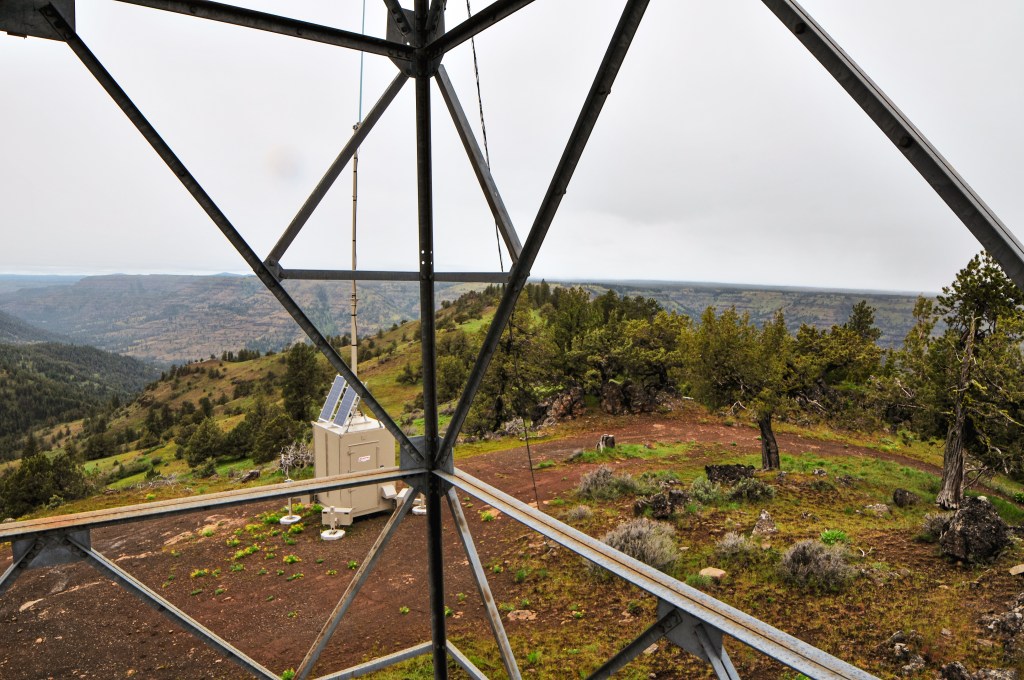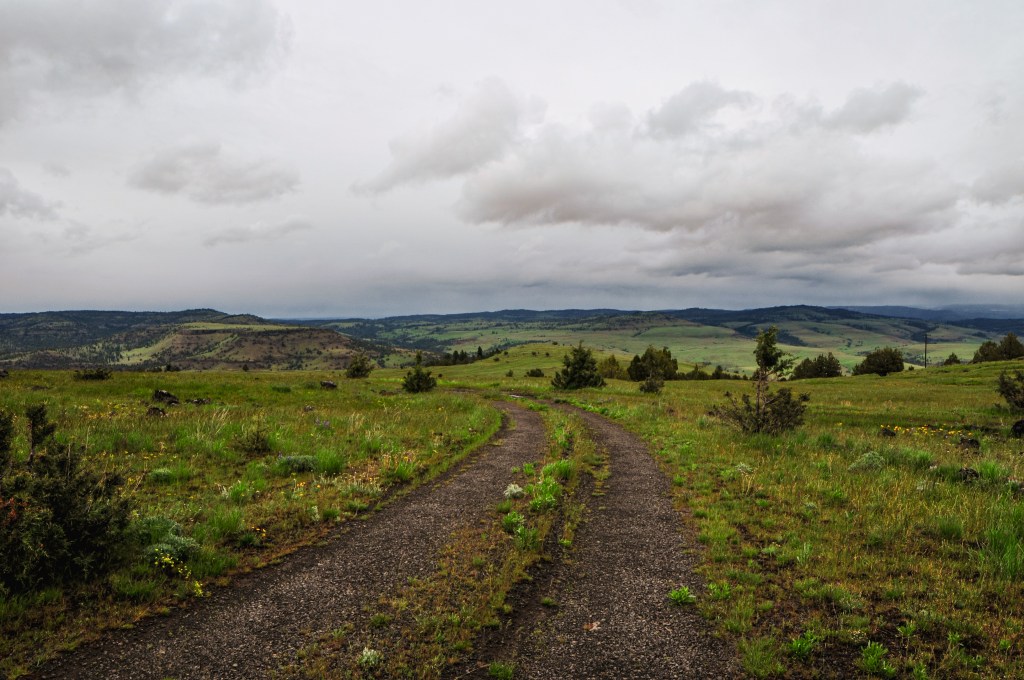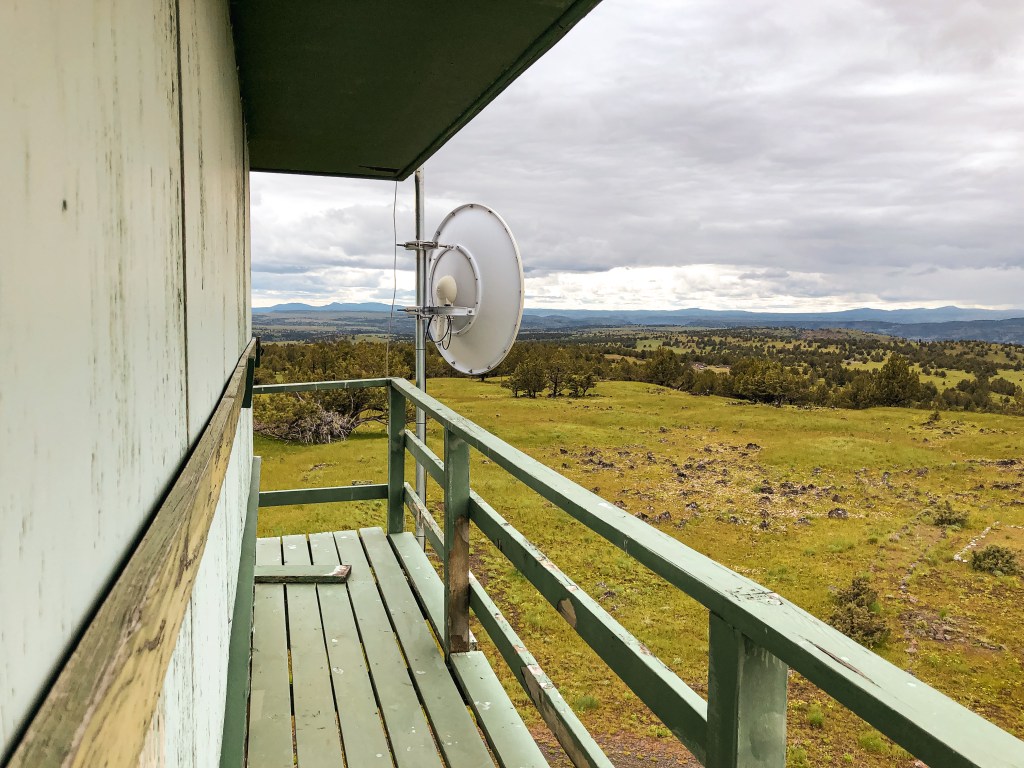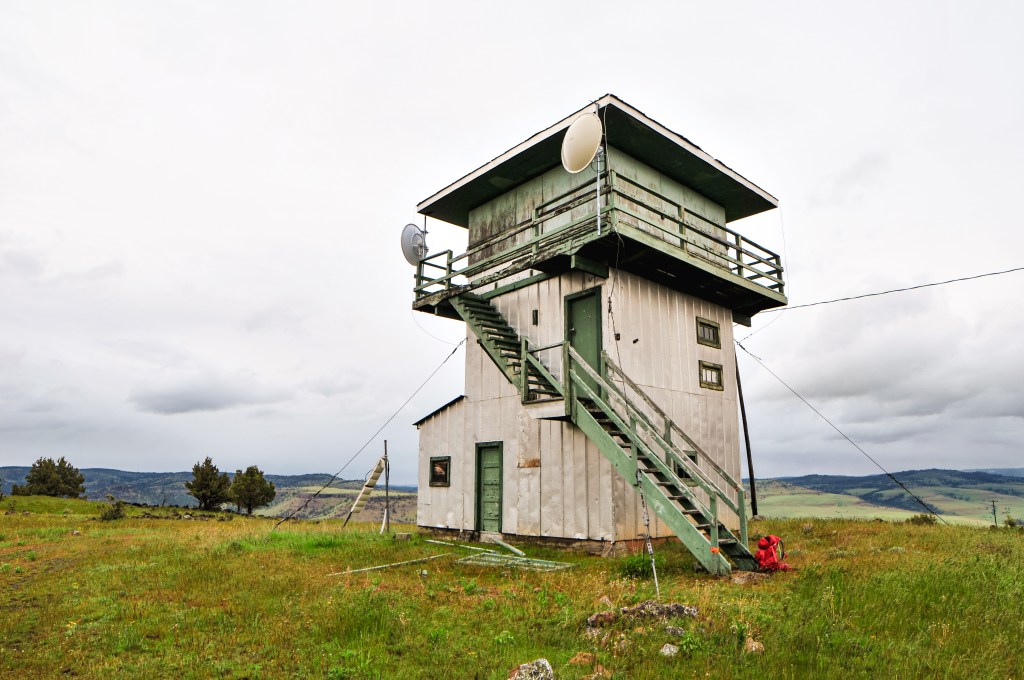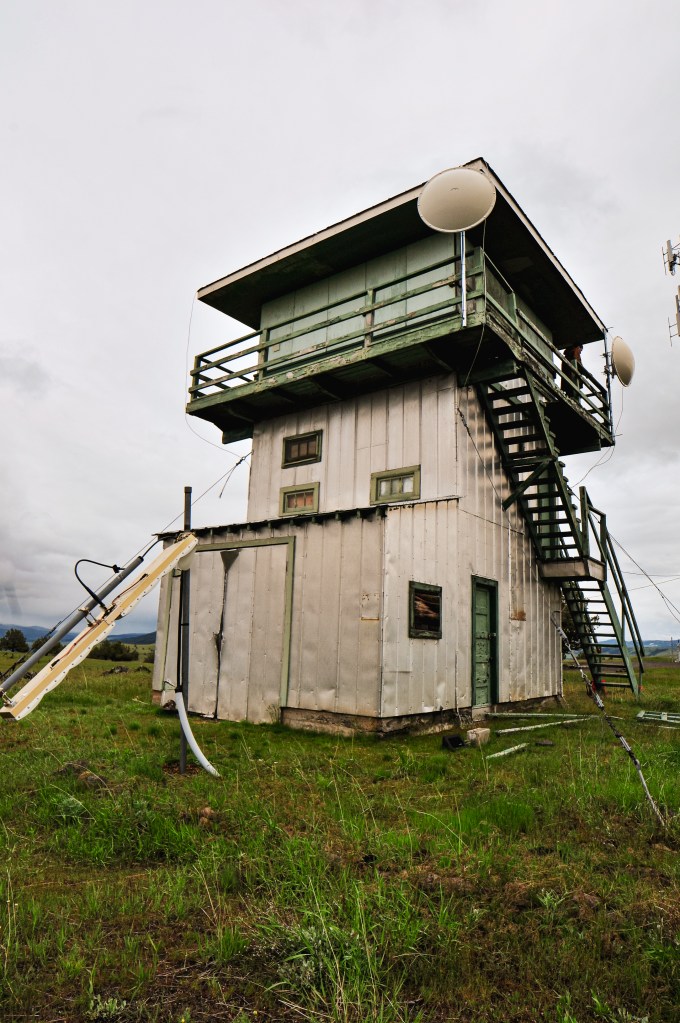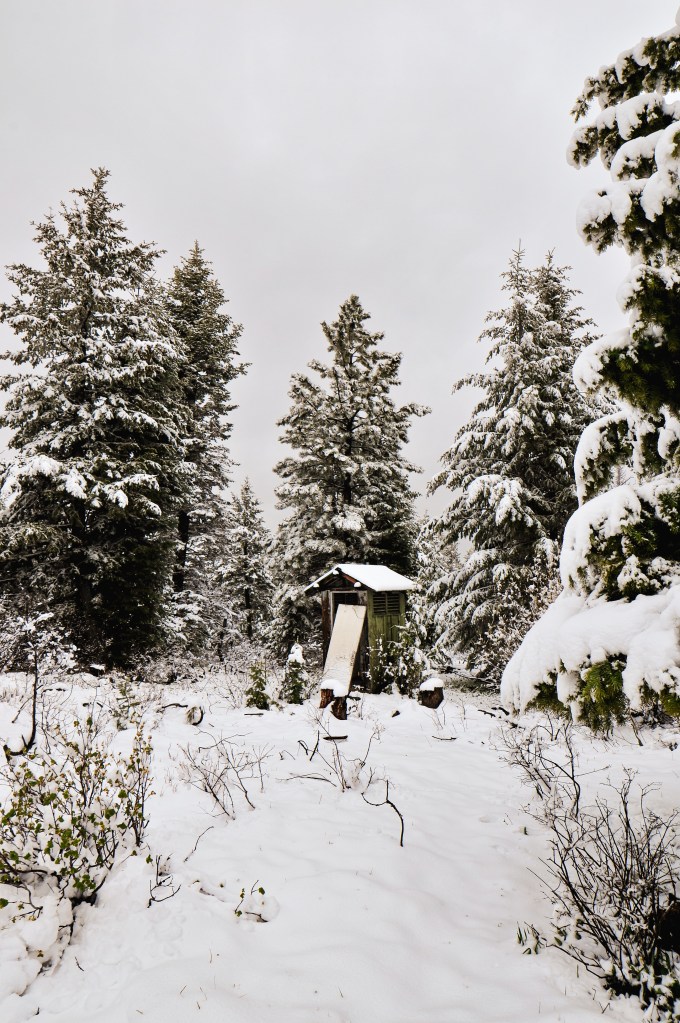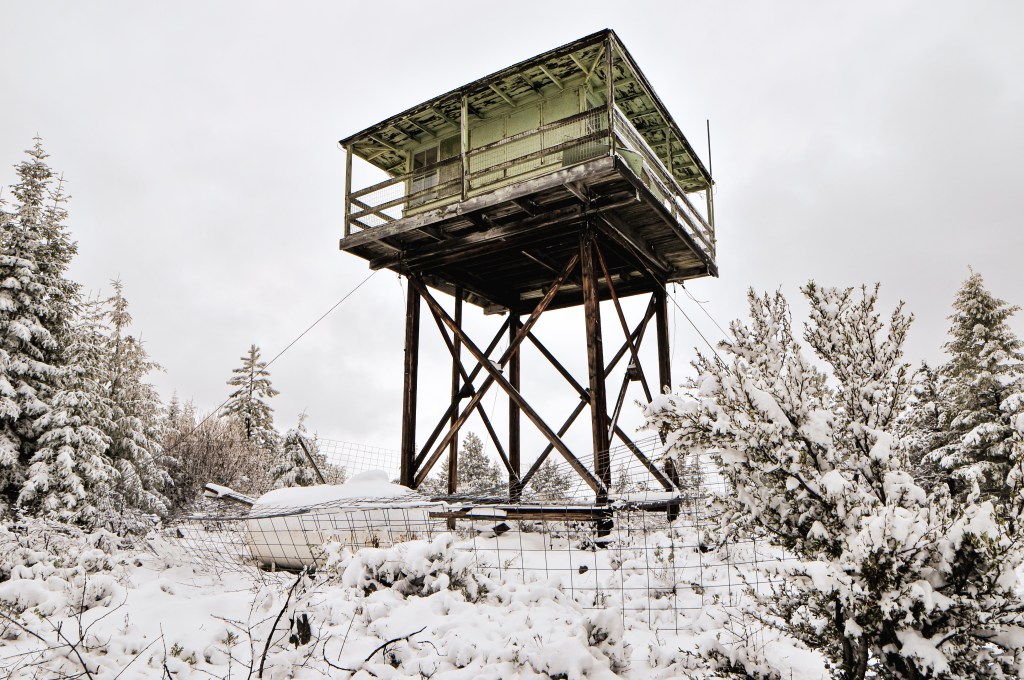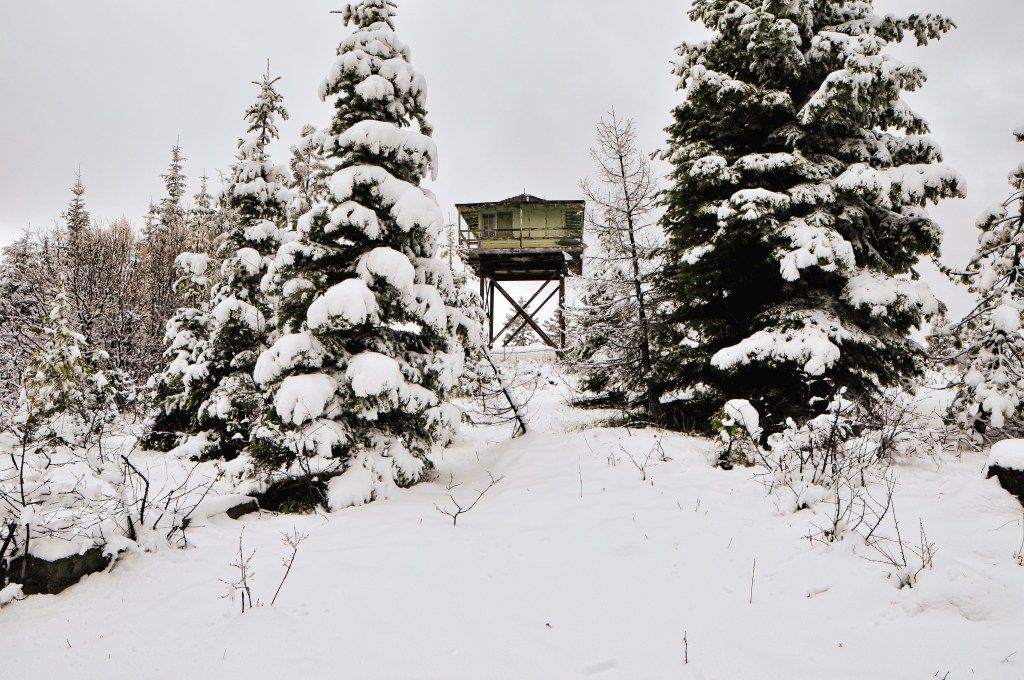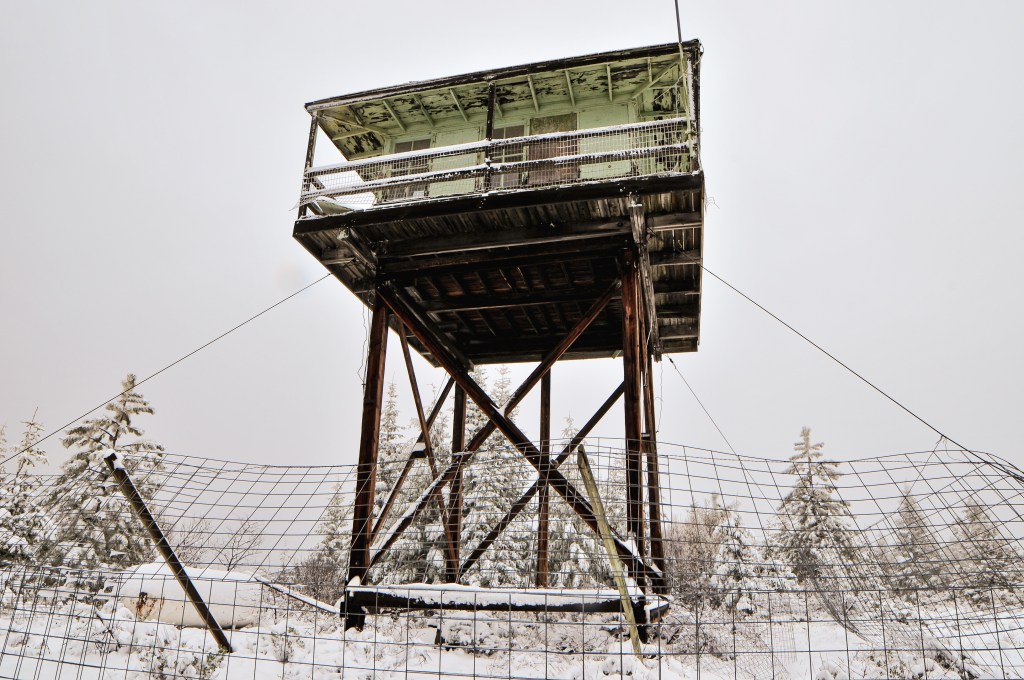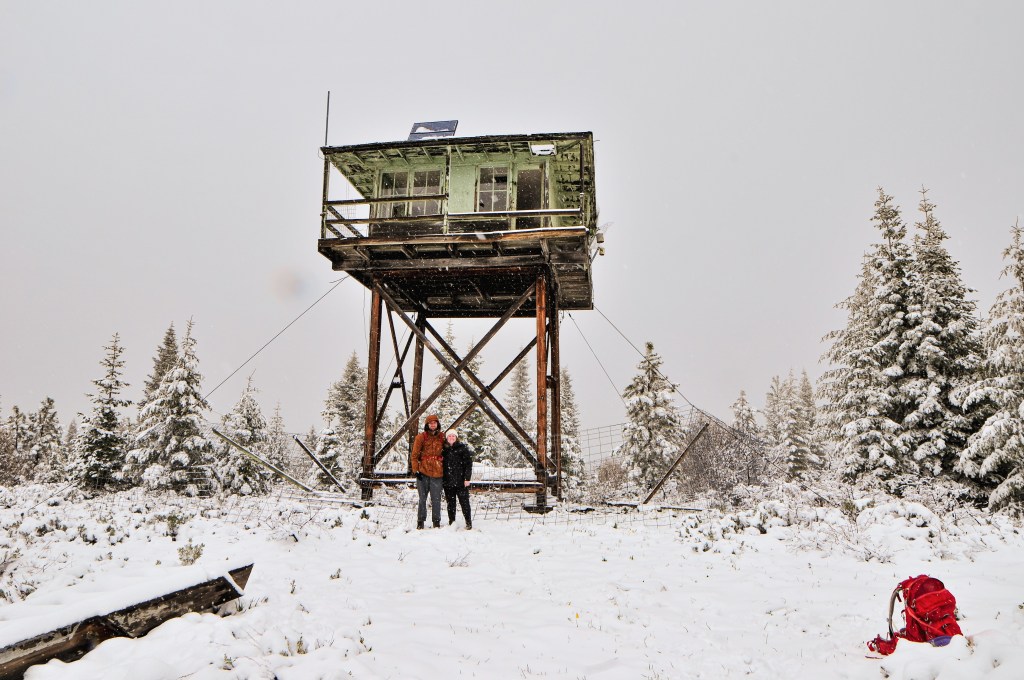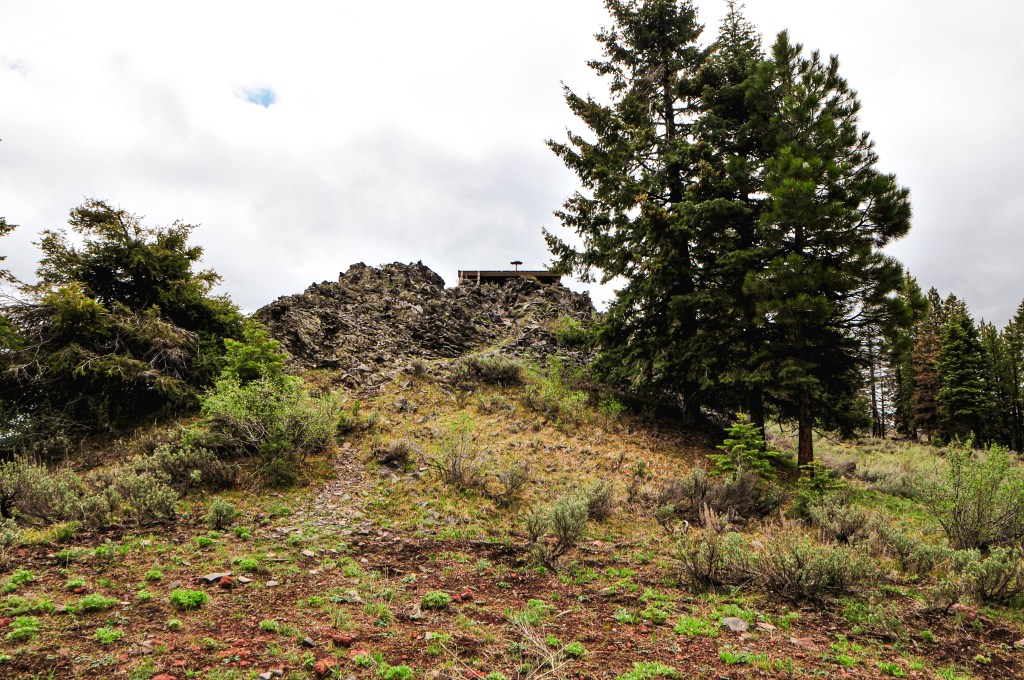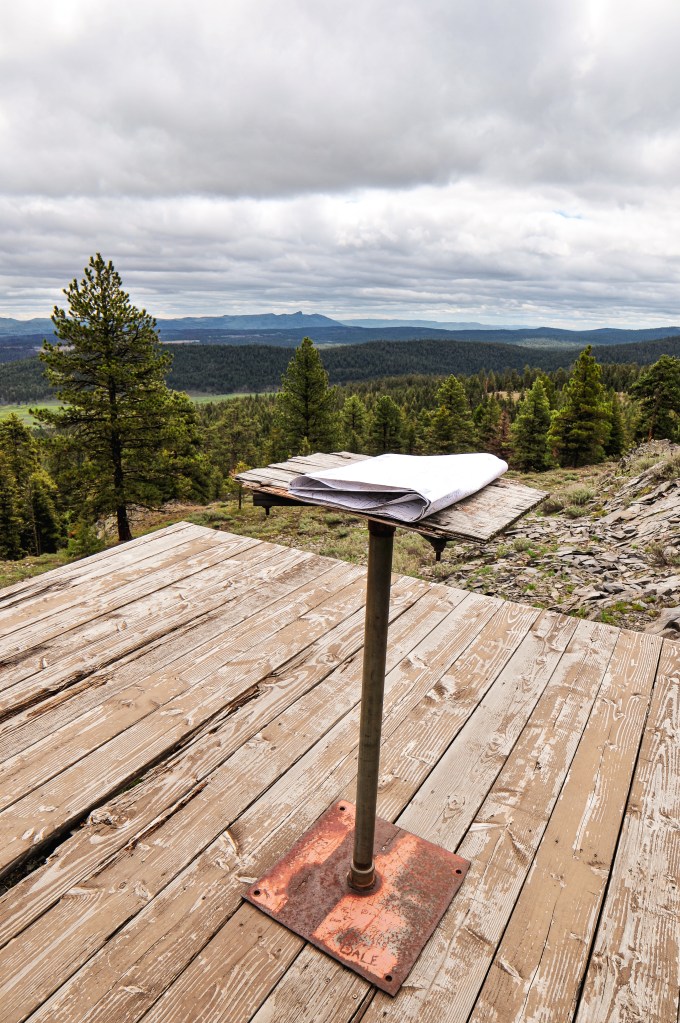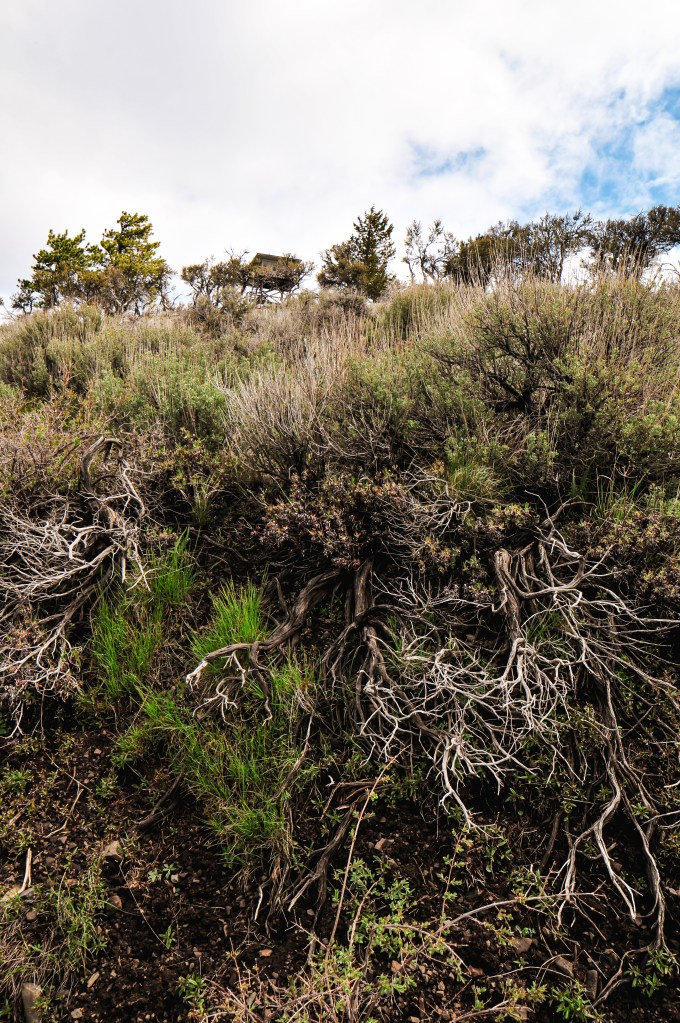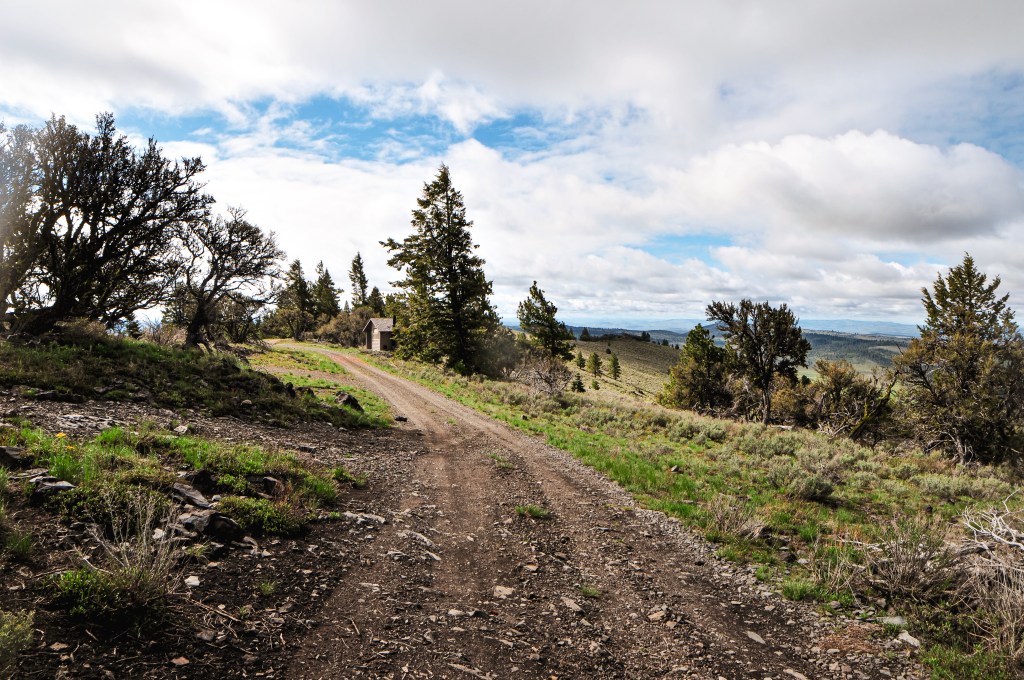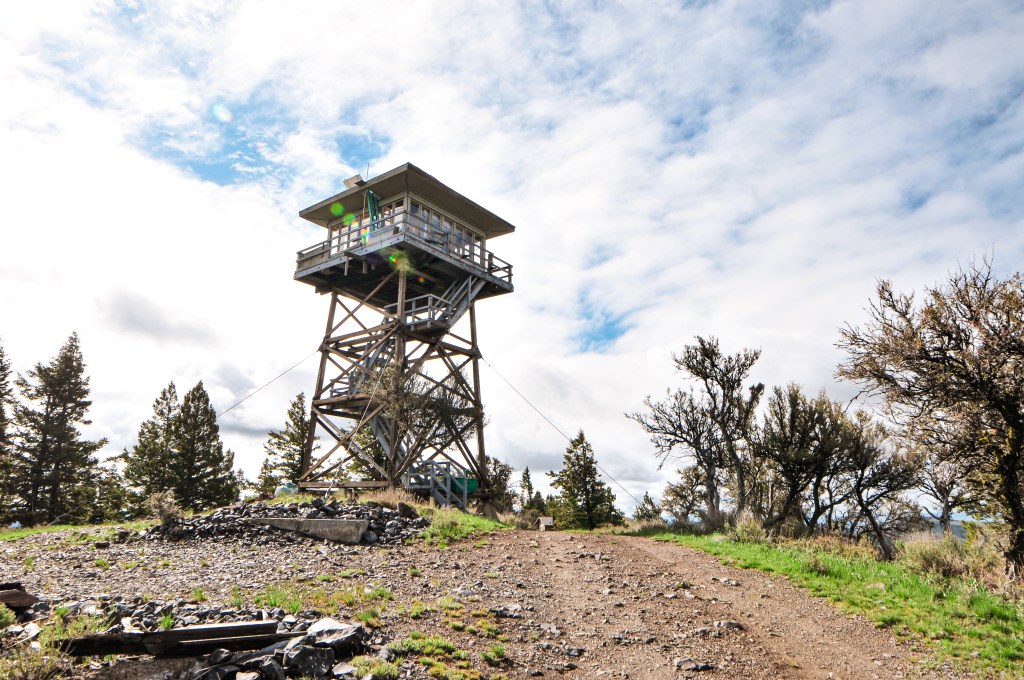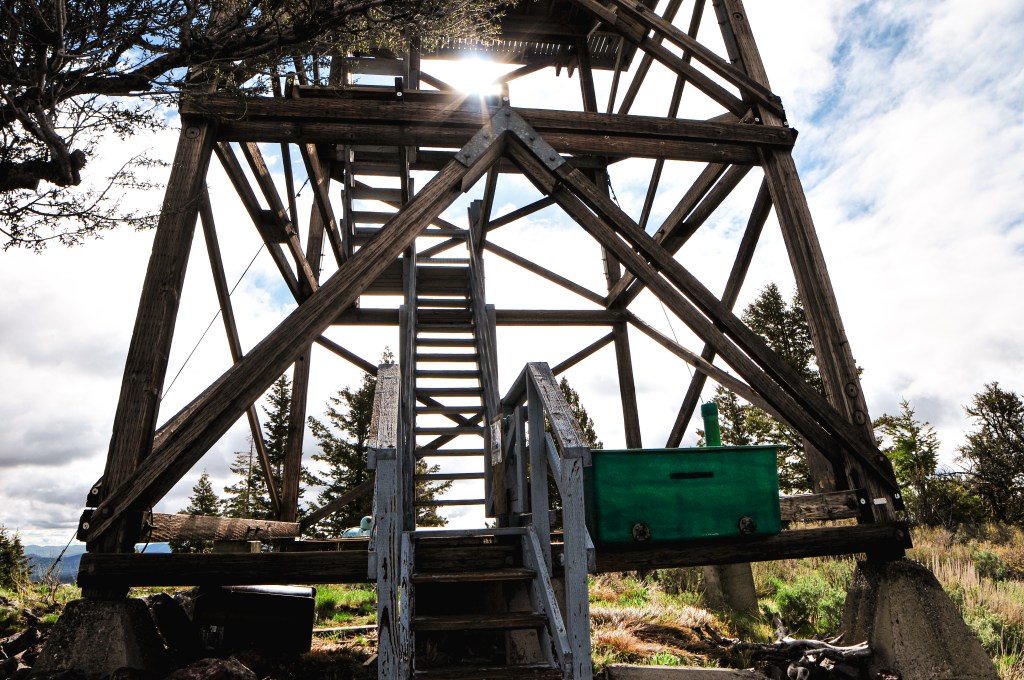Location.
Bureau of Land Management – Burns District
Status.
Emergency; Currently standing
Estimated drive time from Portland, OR.
6 hours
Date visited.
June 18, 2022
Elevation.
6,510′
National Historic Lookout Register.
US 954;OR 126
Trip Report.
We tried to wake up early Saturday morning to give us as much time as possible to visit Wagontire Mountain, fondly referred to as Wagon-TEER by my partner. It was an unfortunately damp morning and looked like it would be a rainy day ahead. From Hines to the community of Wagontire is about 50 miles of highway driving that doesn’t include our drive out of the forest, the 5 miles of gravel to the gate, or the 6 miles of hiking we’d need to do round trip. We headed out of camp back towards Hines and out on HWY-20 towards Riley. From Riley, we turned on to HWY-395 to the community of Wagontire. We weren’t able to see the lookout from the highway since it was deep within a rain cloud. The road you will take to get to the lookout is unmarked. It will be the first right turn after mile post 29D outside of the community of Wagontire. None of the roads leading to the lookout in this area are marked at all and could be confusing without the proper directions. I had done some prior research and found detailed directions from an Ascent Trip Report by Paul McClellan on PeakBagger. It’s helpful to zero your odometer and follow his below directions.


- 0.0 cross a cattle guard
- 0.4 continue straight, right at the junction
- 1.5 continue straight, right at the junction
- 3.2 cross a dry creek bed. I’d barely consider this a creek bed and given that it was dry even during a wet spring makes me think it only flows when the snow melts.
- 4.0 cross a cattle guard
- 5.2 cross a cattle guard
- 5.6 bear right at the junction, you should see the gate shortly after
- 5.8 arrive at gate and park
It seems in previous years the gate leading to the lookout has been locked, but it was open on our trip. The road just past the gate is overgrown and full of large rocks that I wouldn’t want to attempt even on a good day. We parked to start our 3-mile hike to the summit. The roads getting to the gate alternate between dirt and rock. The dirt sections were a bit slick after all the rain and the rocky sections would pose a threat to a lower clearance. I was once again thankful for the extra clearance provided by the HR-V and speculated if my Civic could handle this road too. I think if one was to attempt this in a lower clearance vehicle they would need to do this on a dry day with a lot of confidence.

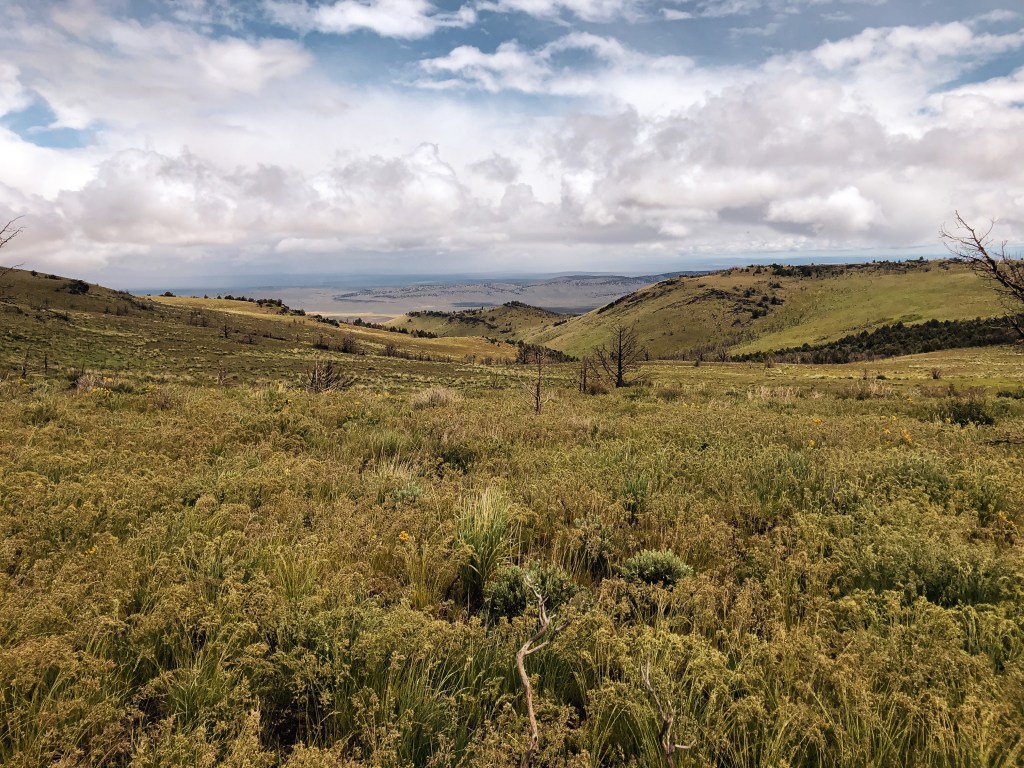




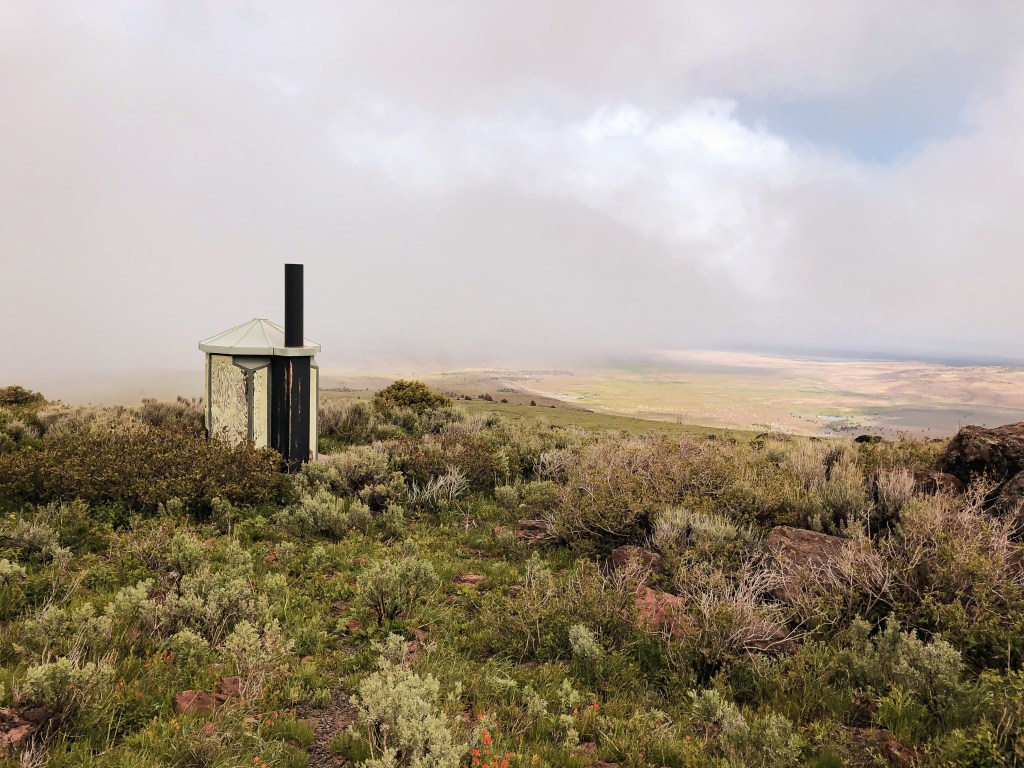
The hike up follows the road but was pleasant and it didn’t feel like much of a road walk at all. You will start up a hill that has signs of a more recent fire, possibly the Cinder Butte Fire in 2017. The rolling hills were covered in meadows with all sorts of different wildflowers. The weather even started to break for us and opened up to some views to the valleys below. Once on top of the hill you will follow a flat ridge for a while before heading up to the final high point. Similar to most lookouts, you will not be able to see Wagontire Mountain L.O. until you are almost there. This lookout is relatively new in comparison to most and was in great condition besides needing a fresh coat of paint. We enjoyed some snacks on the summit while the weather alternated between clear and cloudy. We would’ve stayed longer but we knew we still had a 3-mile hike back to the car and longer drive back to camp. It didn’t really start raining on us until we started to hike down. It was such a pretty road walk that I didn’t really mind the rain. It was crisp and refreshing, a literal breath of fresh air. I thought about how miserable those biking the Skull 120/60/30 must have been that day.

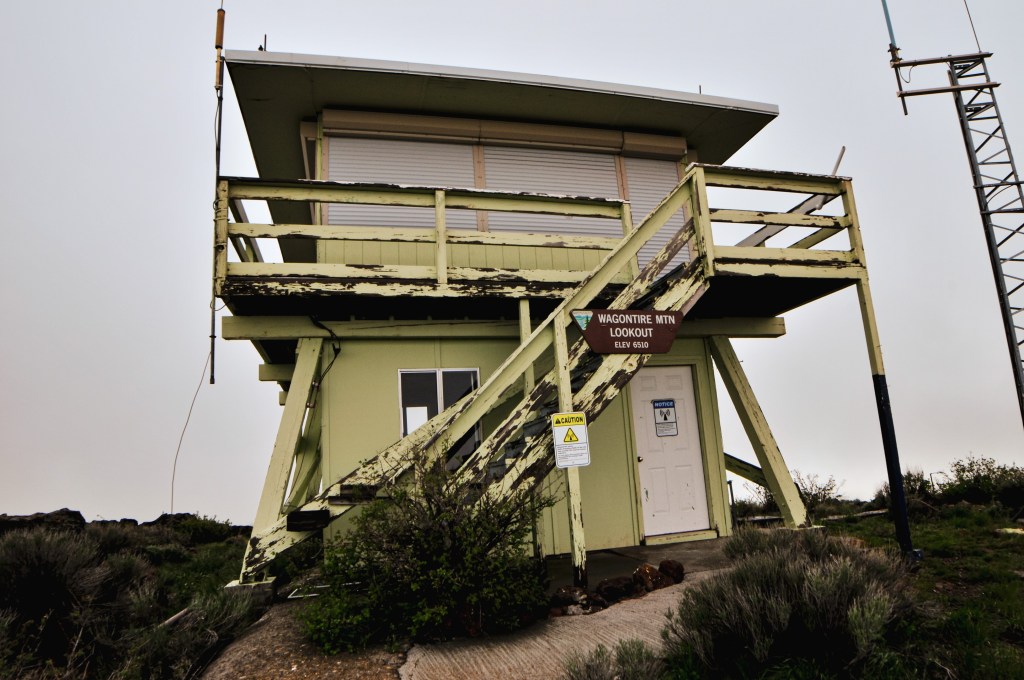

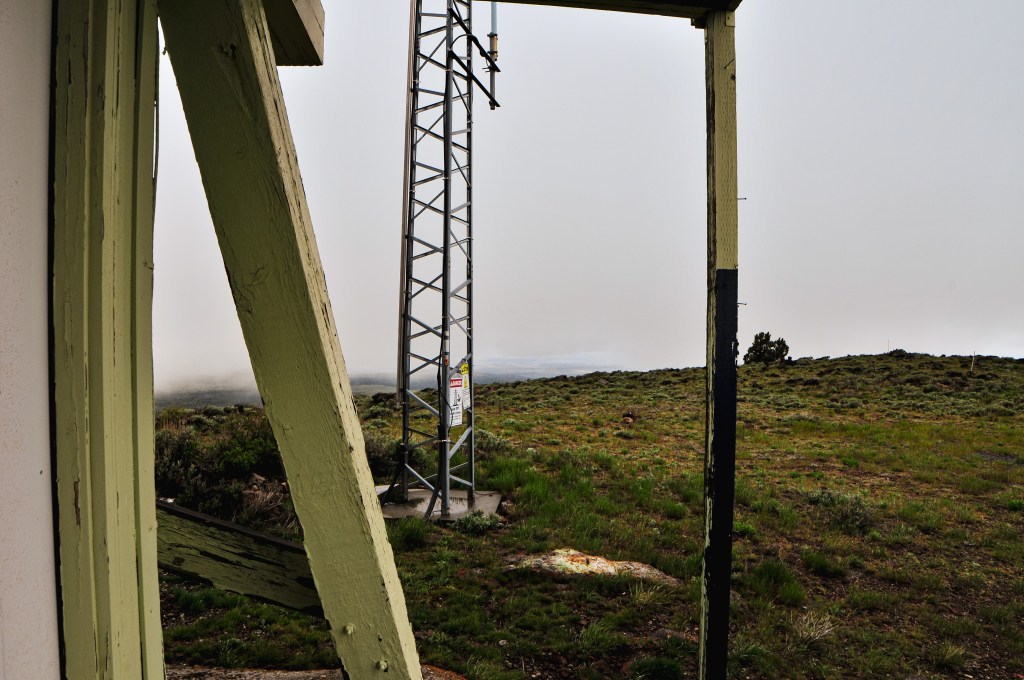
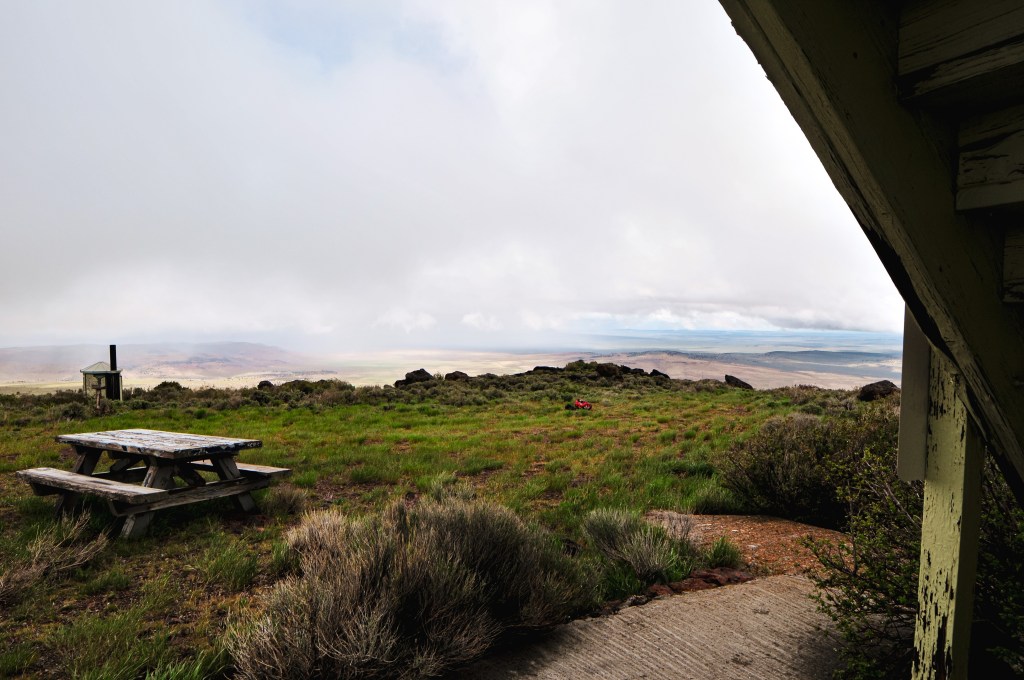



History.
The existing lookout structure on the summit is a 2-story BLM style cab that was built in 1967. This is the first and only lookout that was built here. The name Wagontire comes from an immigrant wagon that was burned by indigenous people in the mid-1800s. Only one wheel was left behind and it remained on the slop until 1925.










